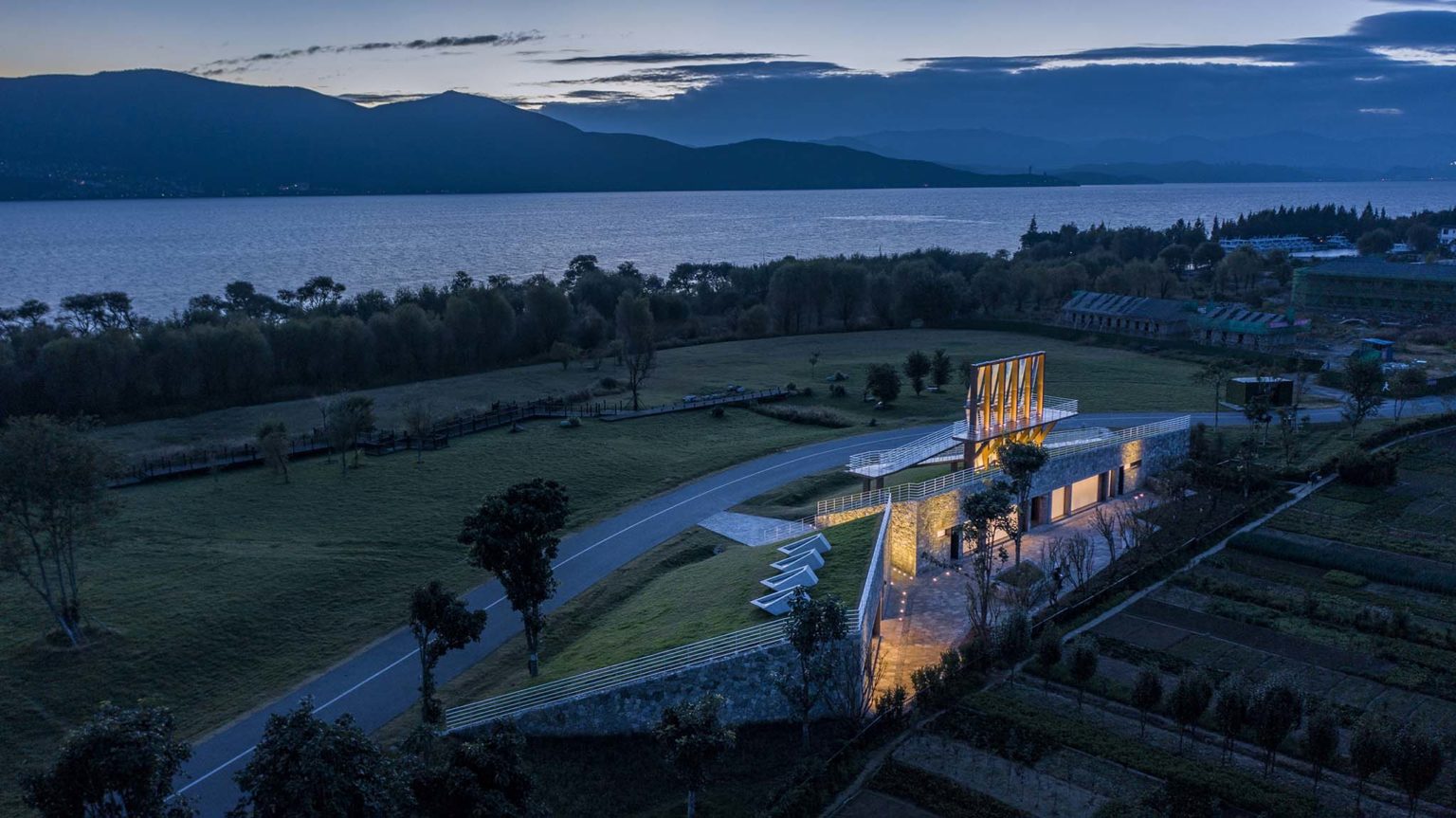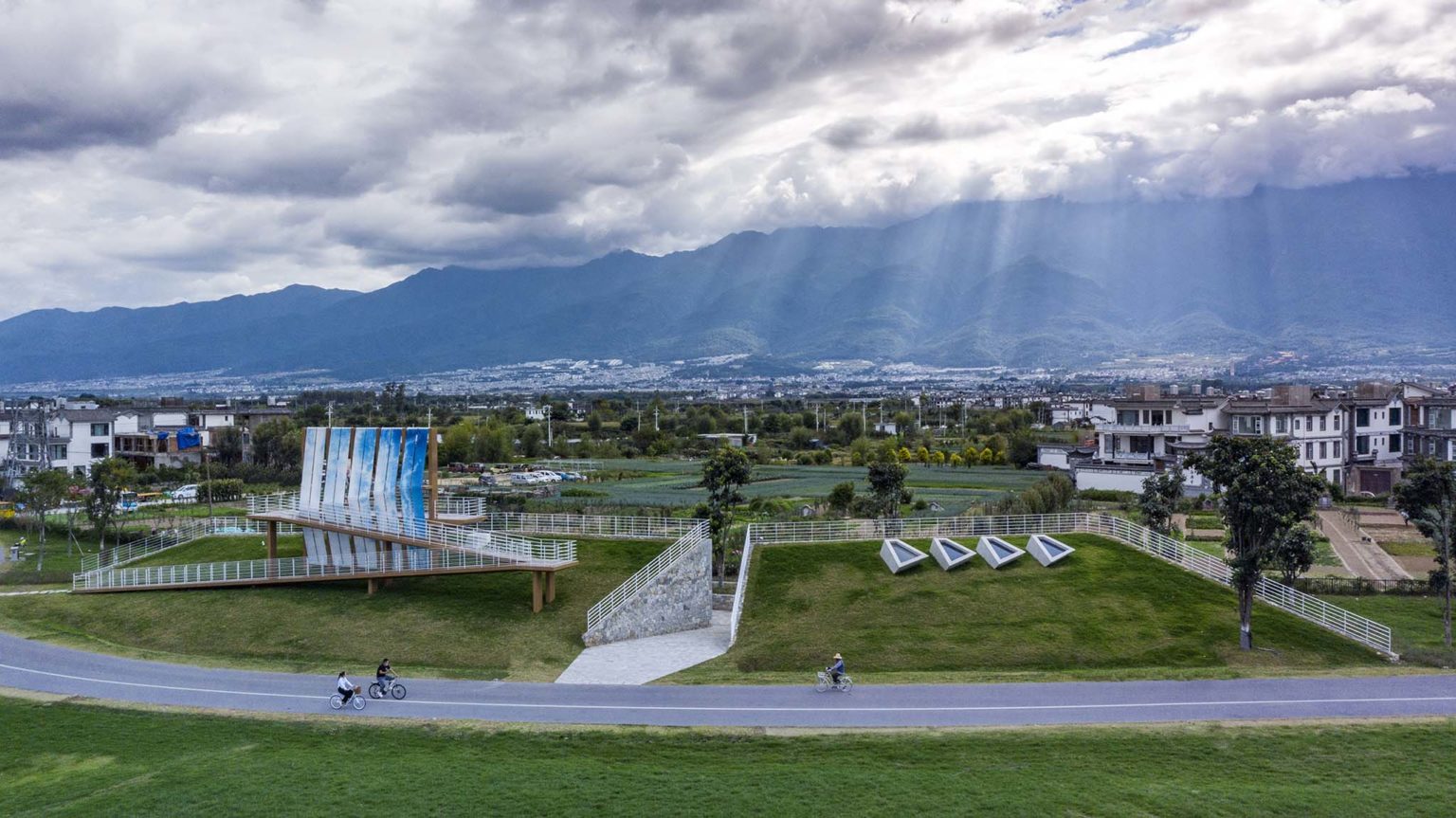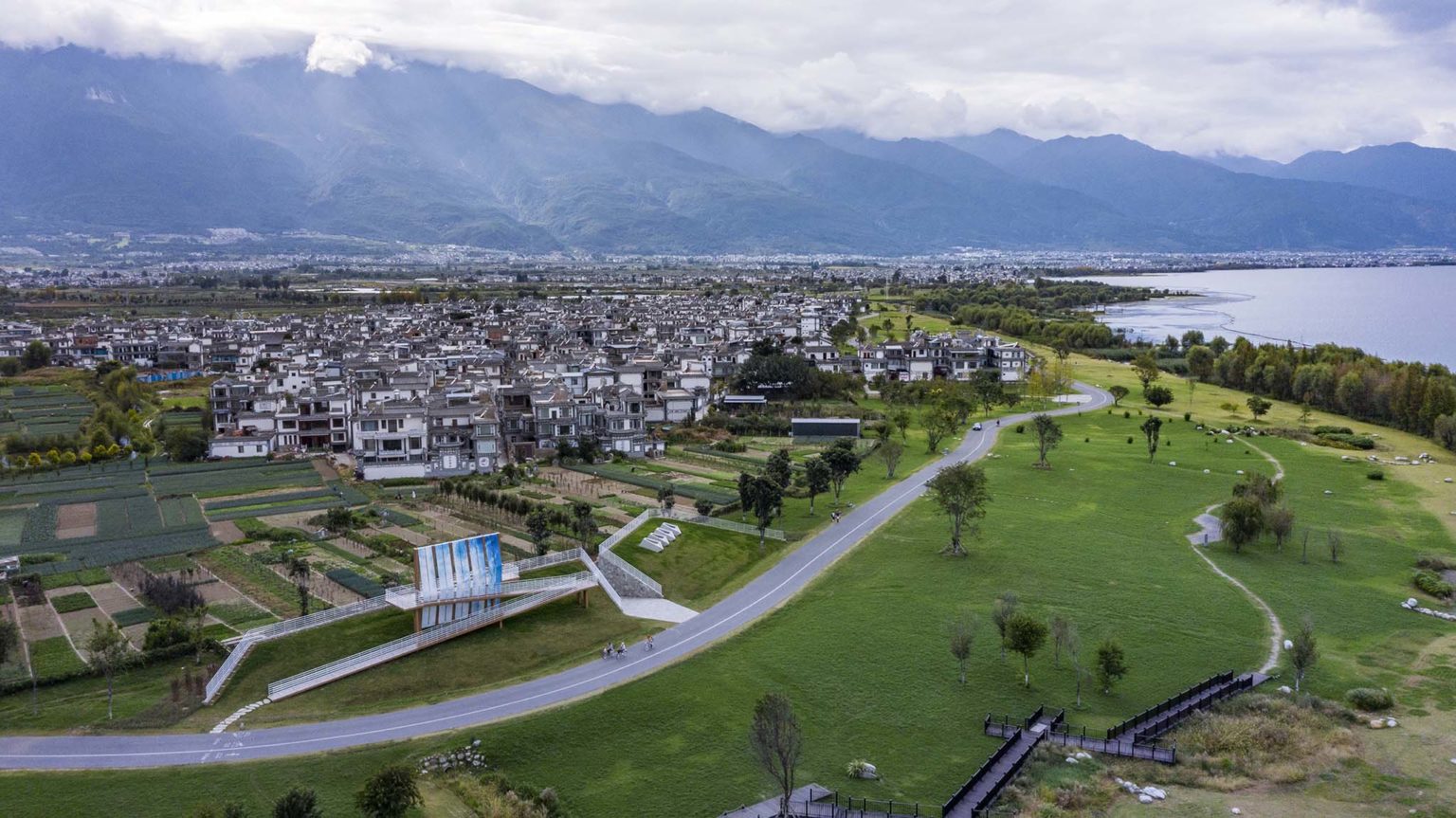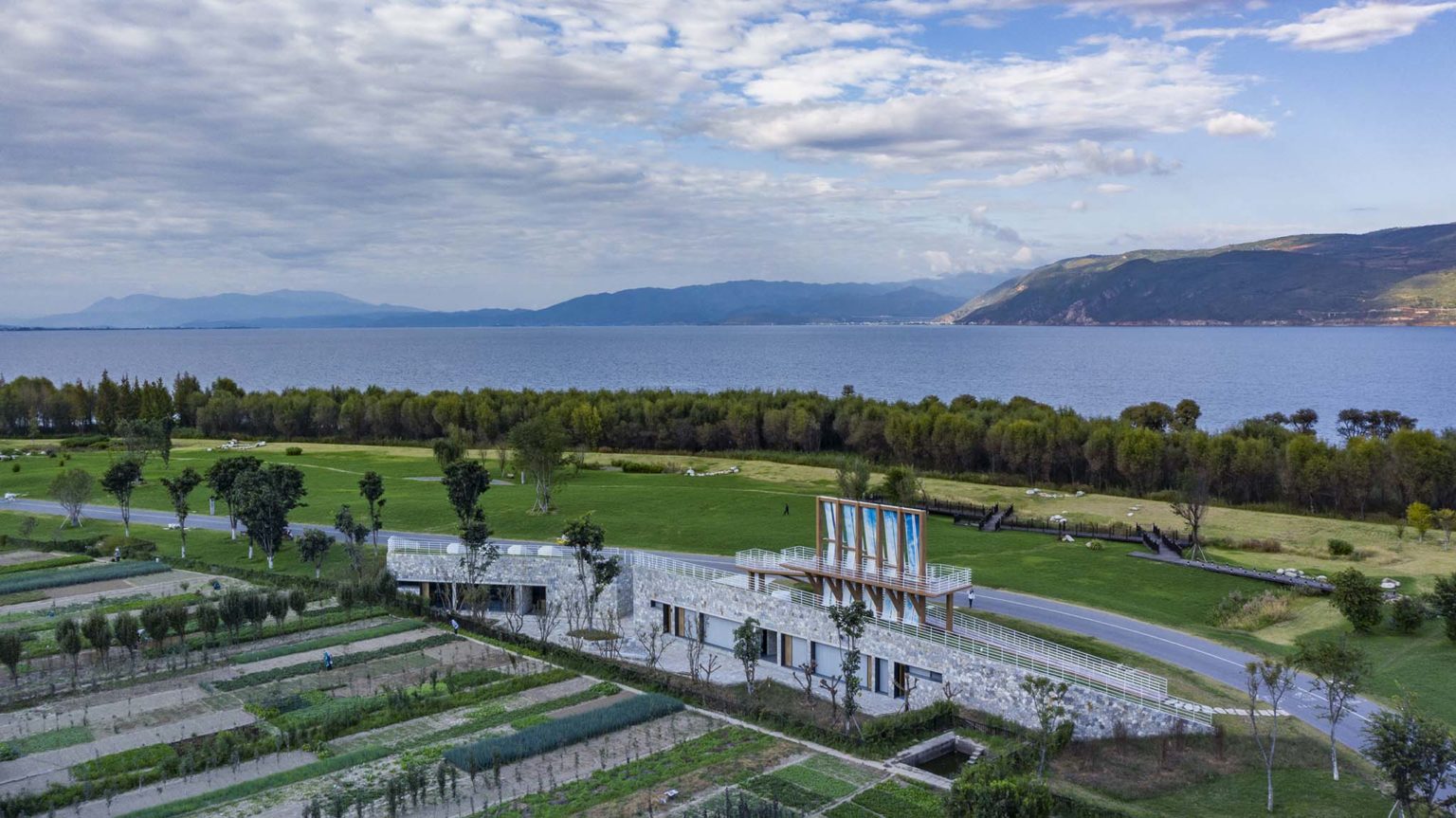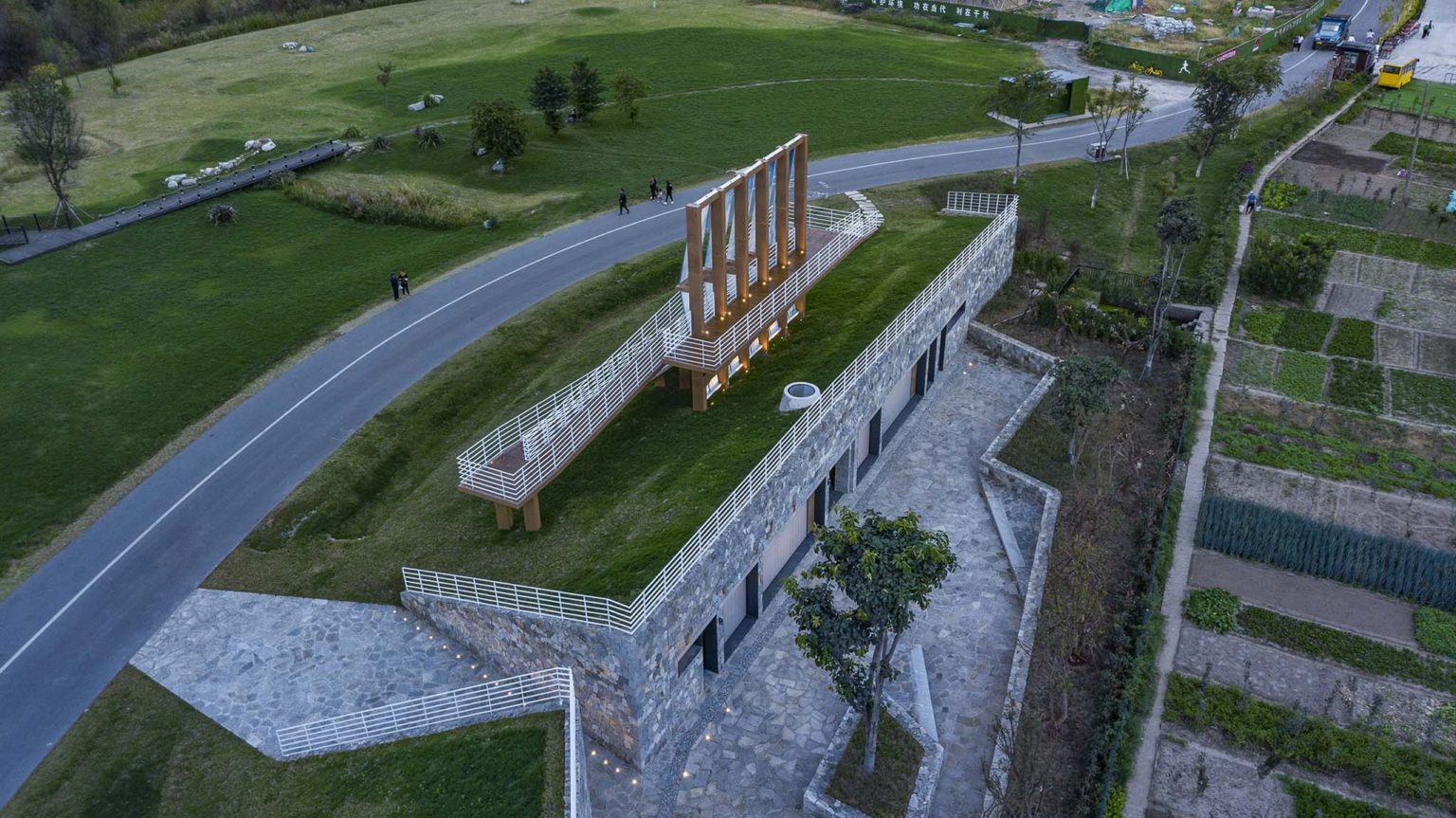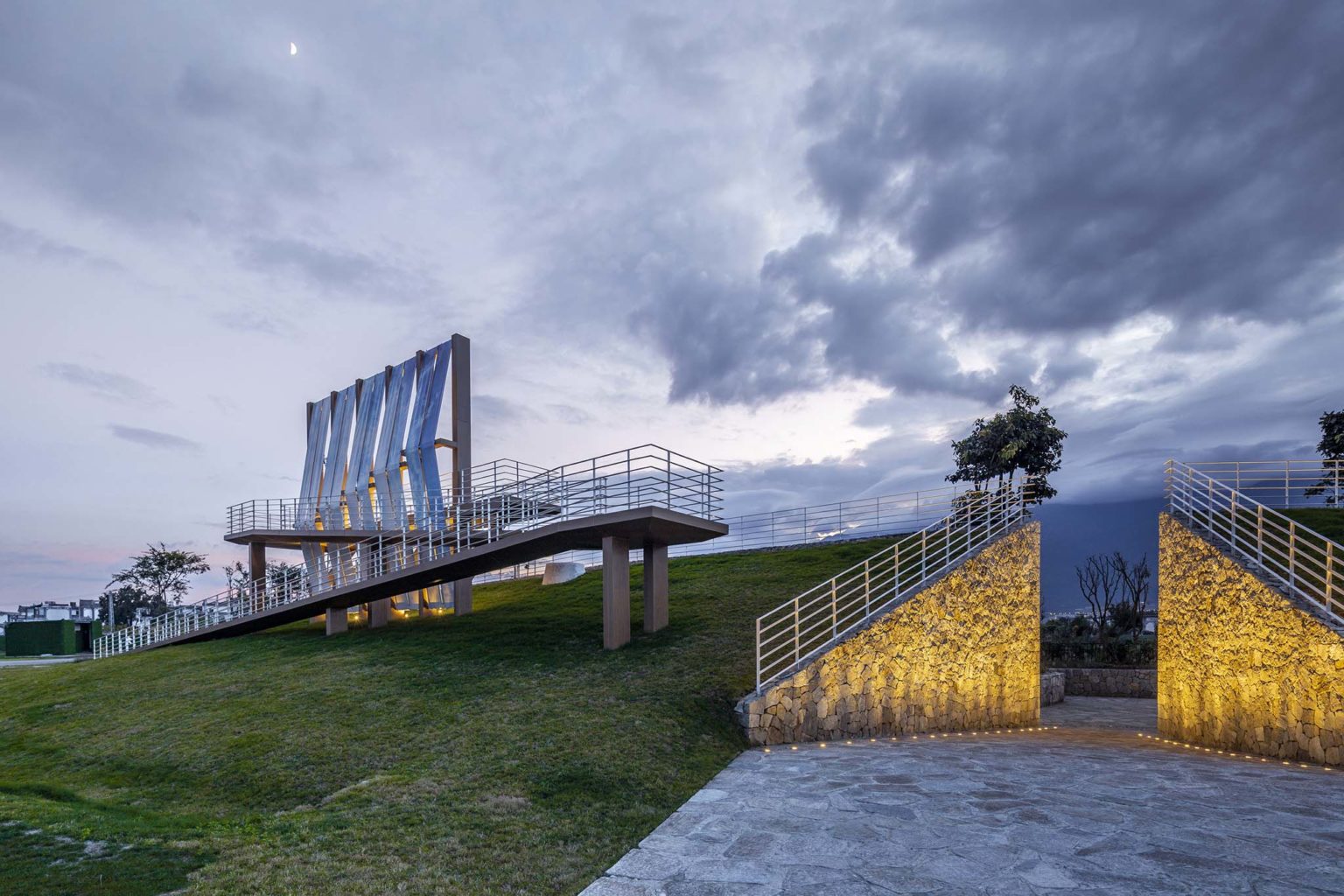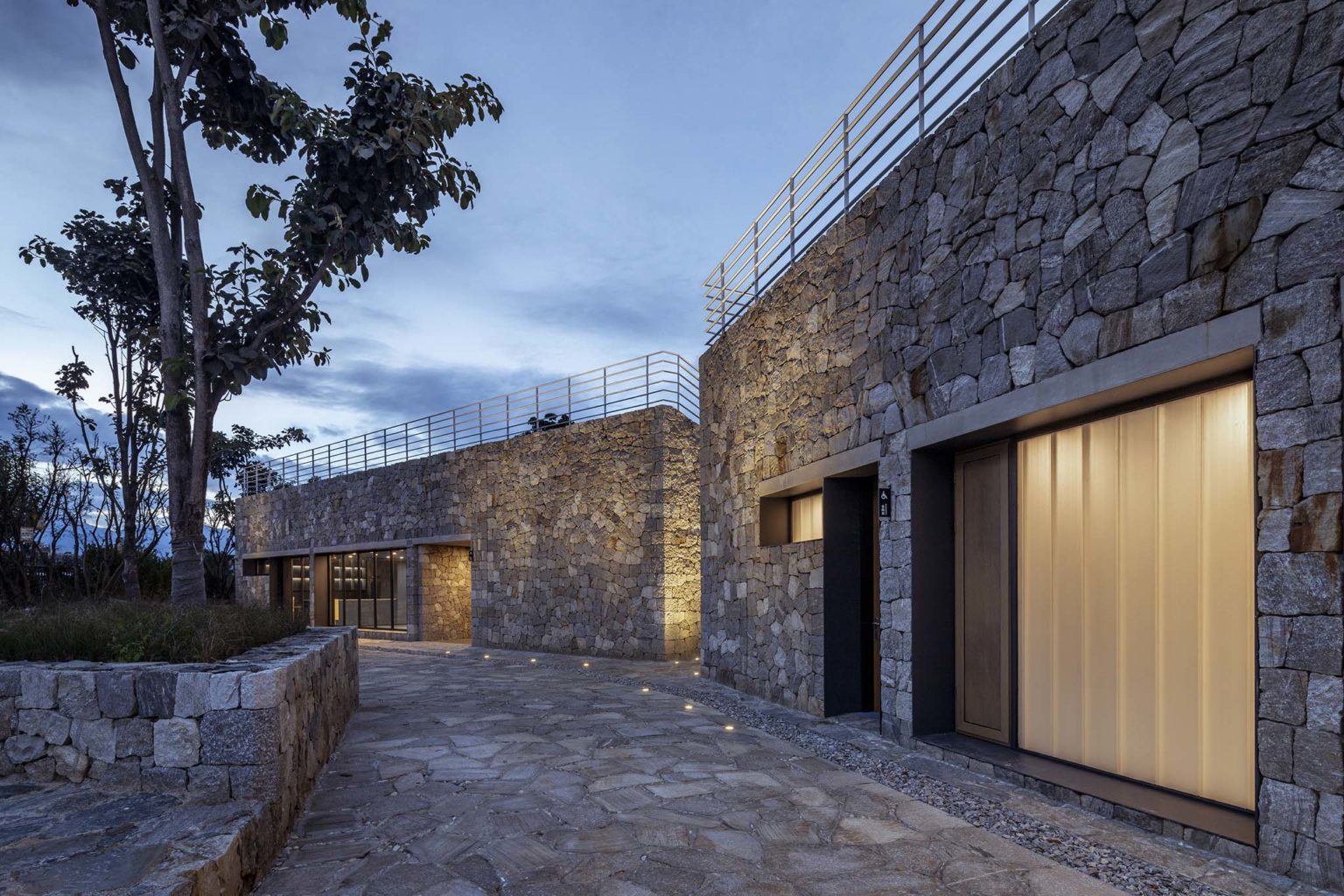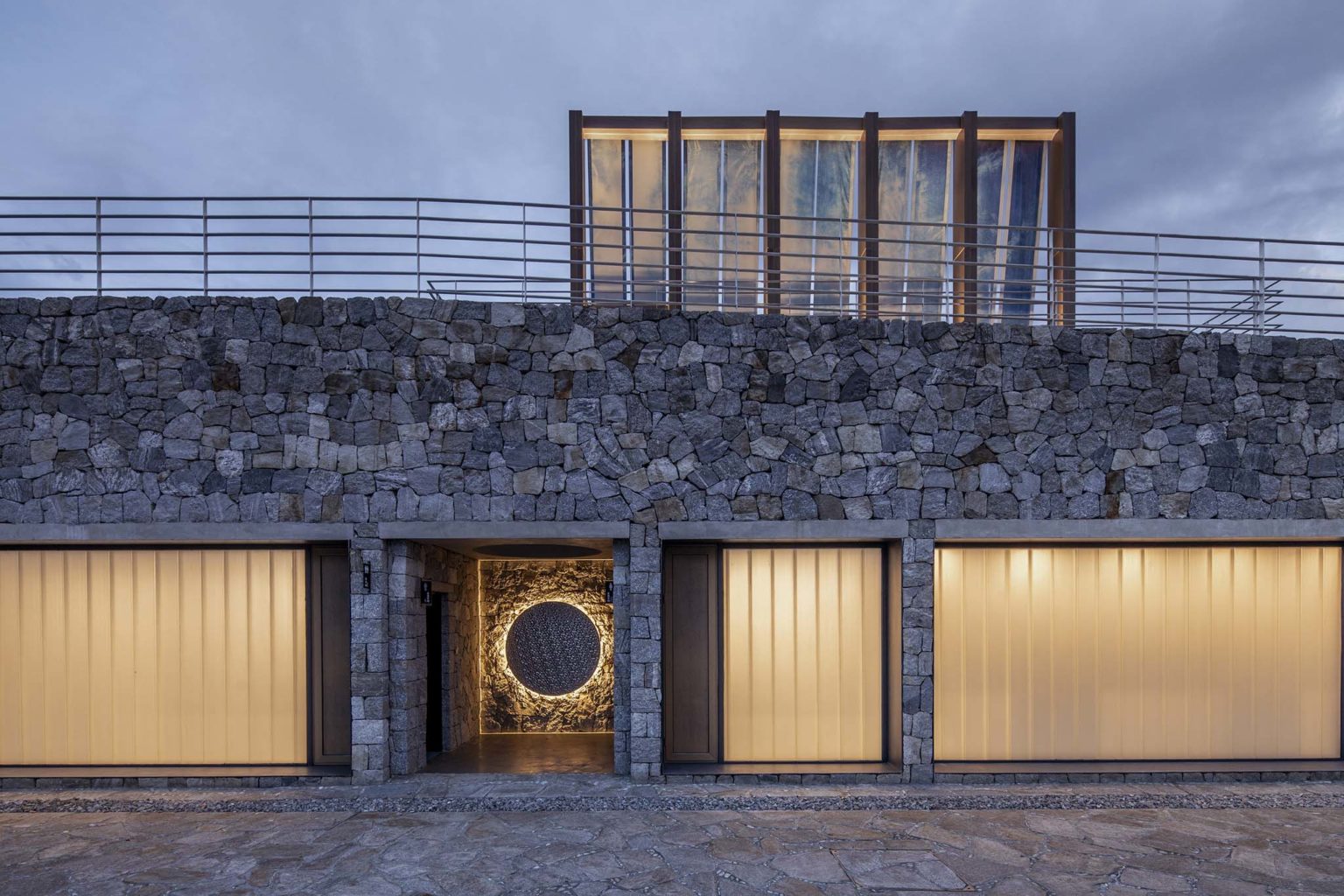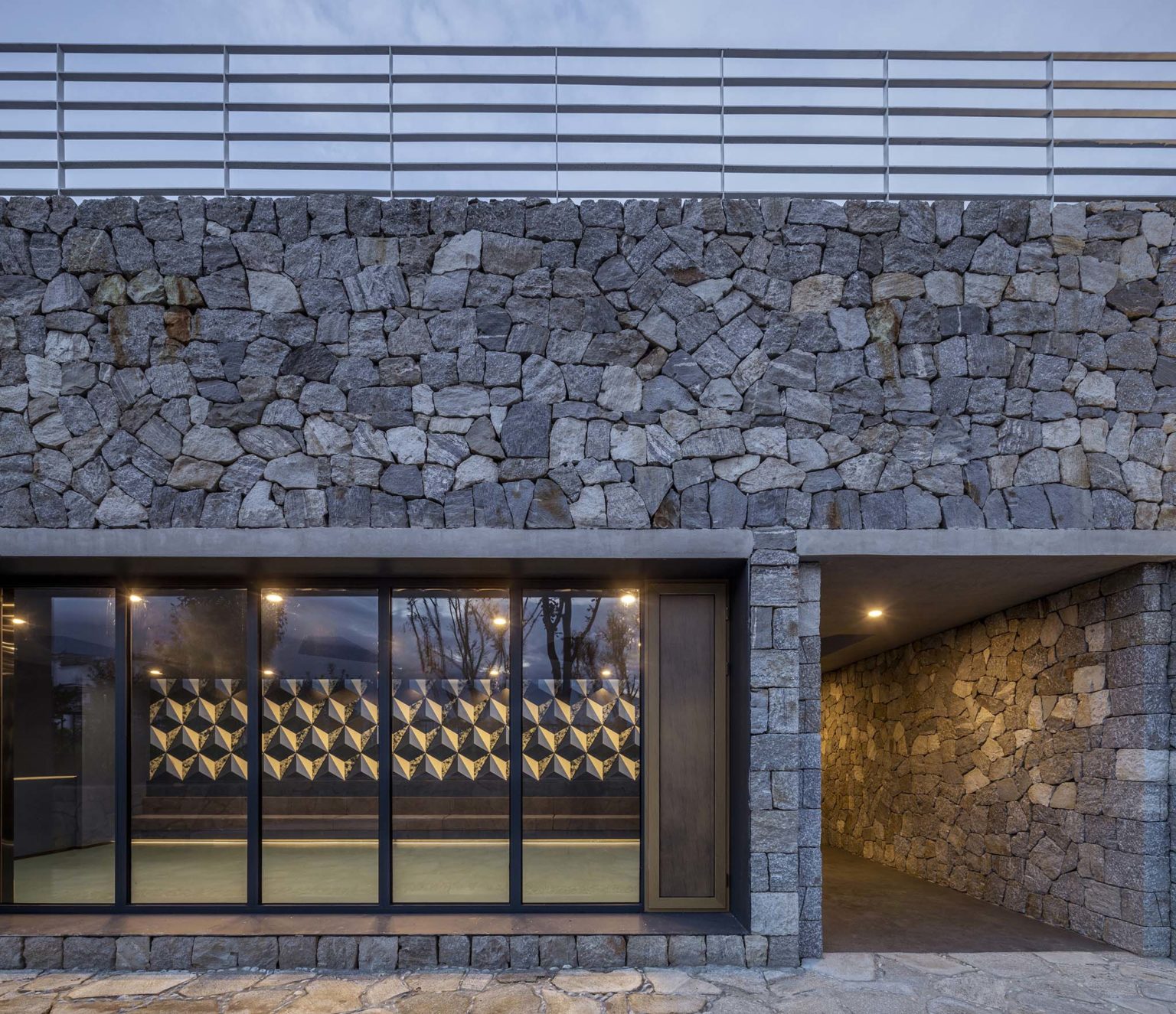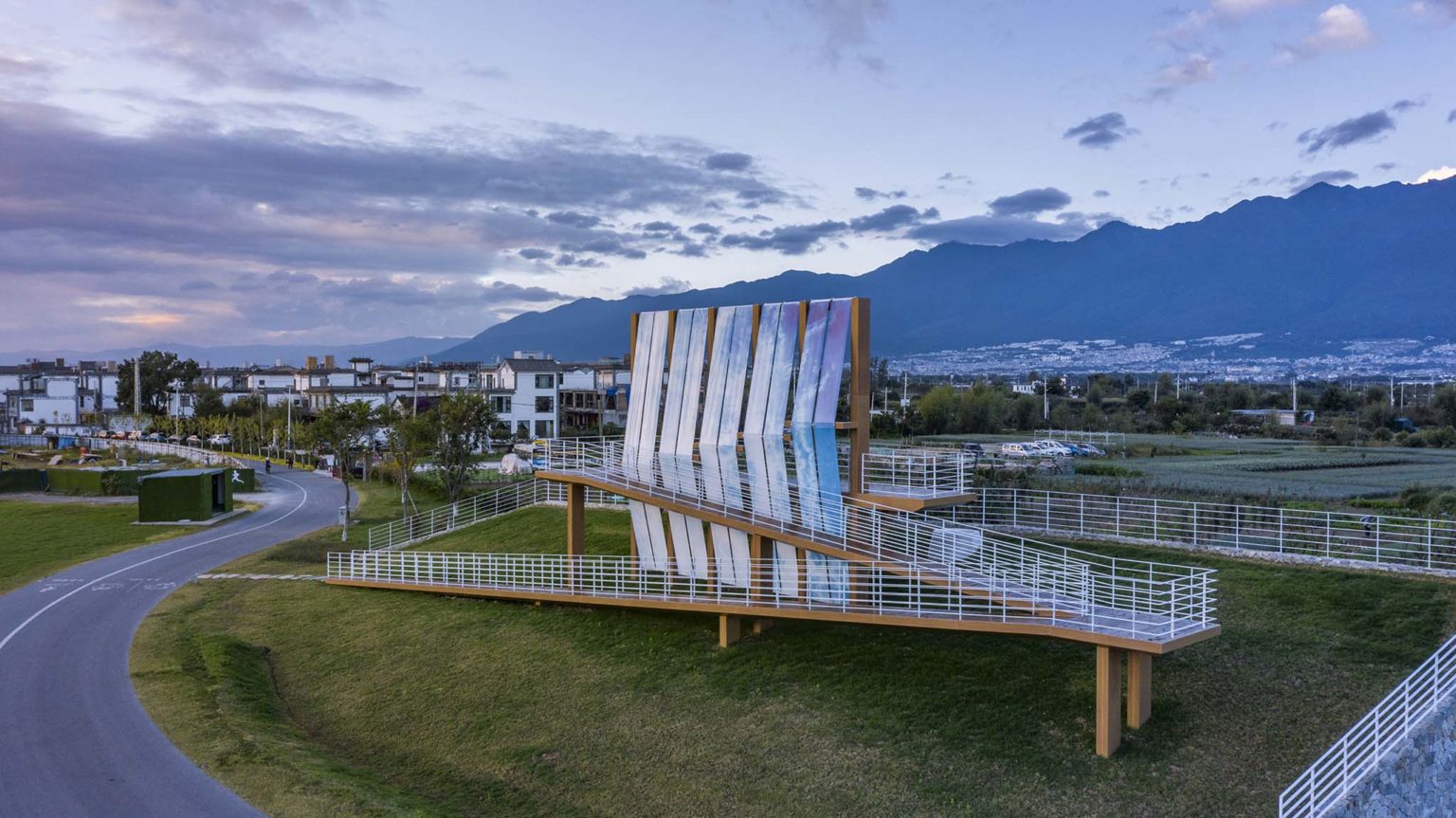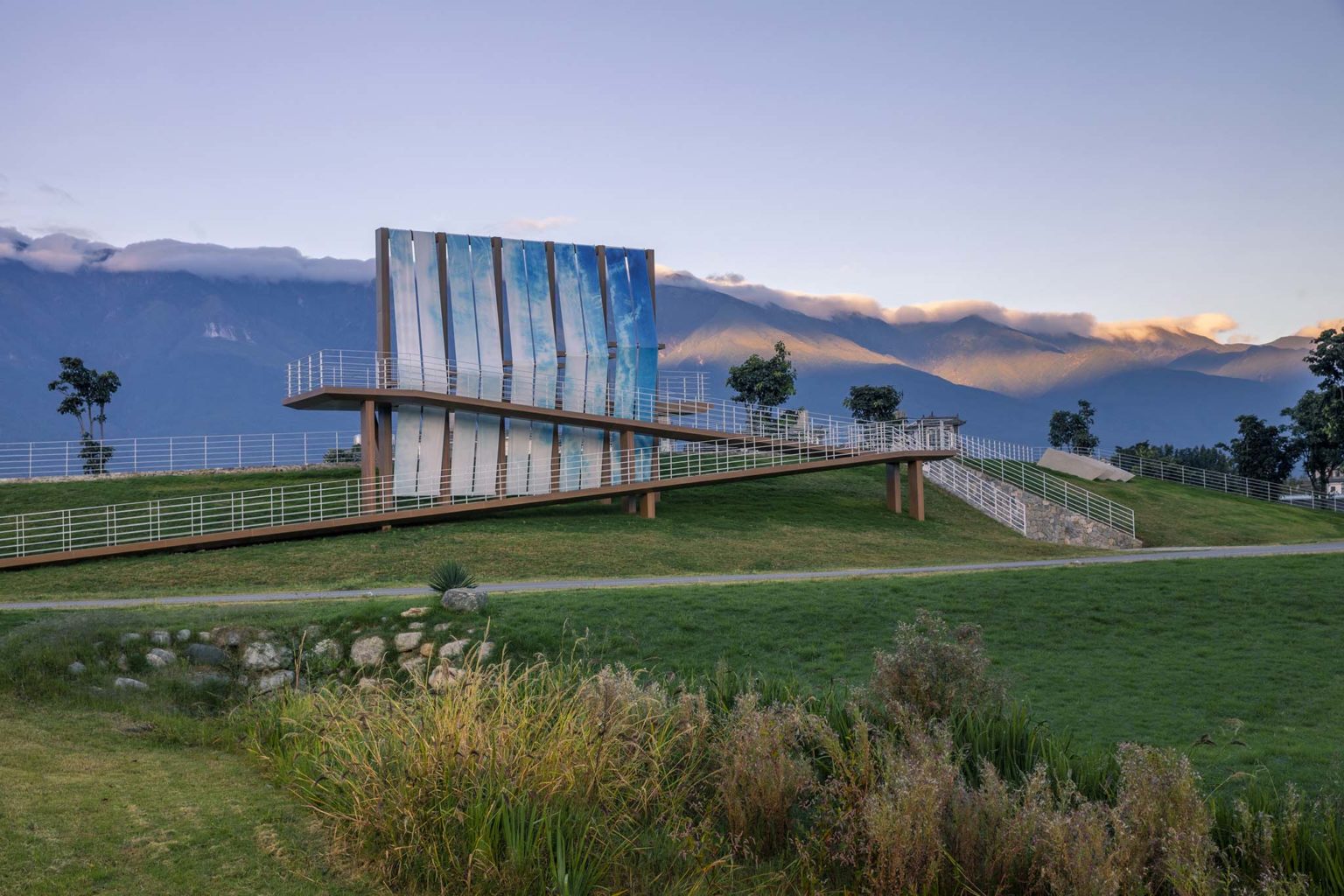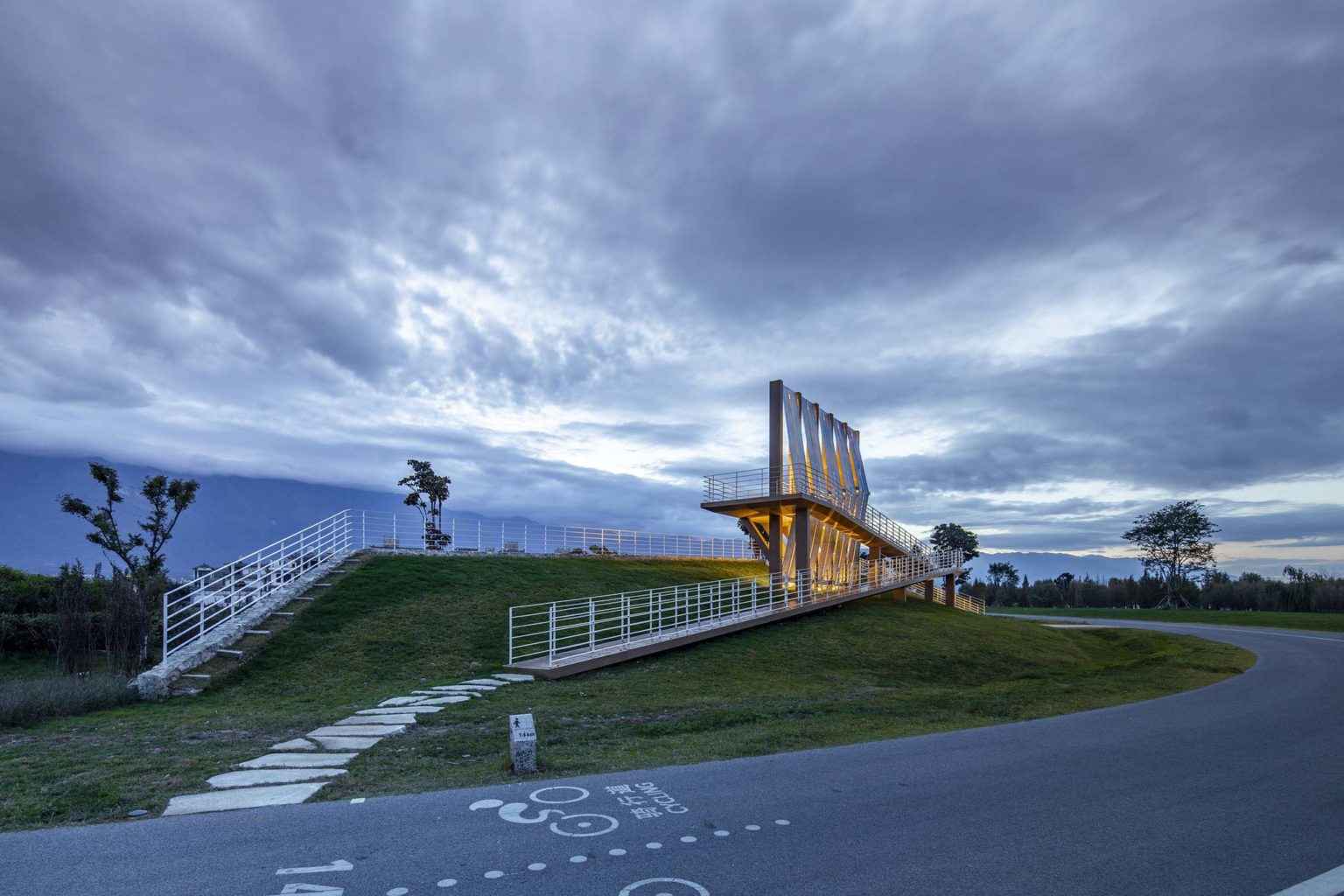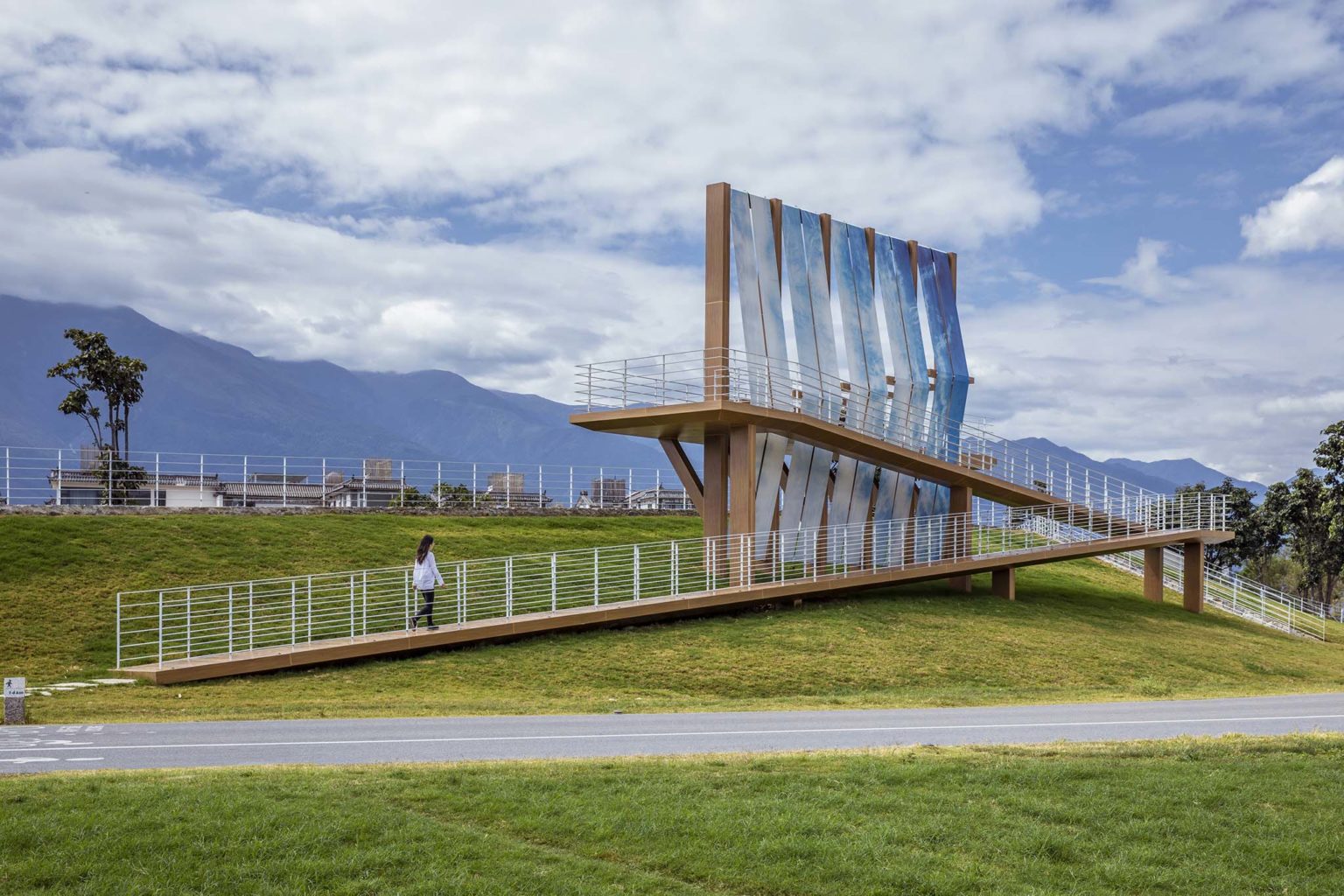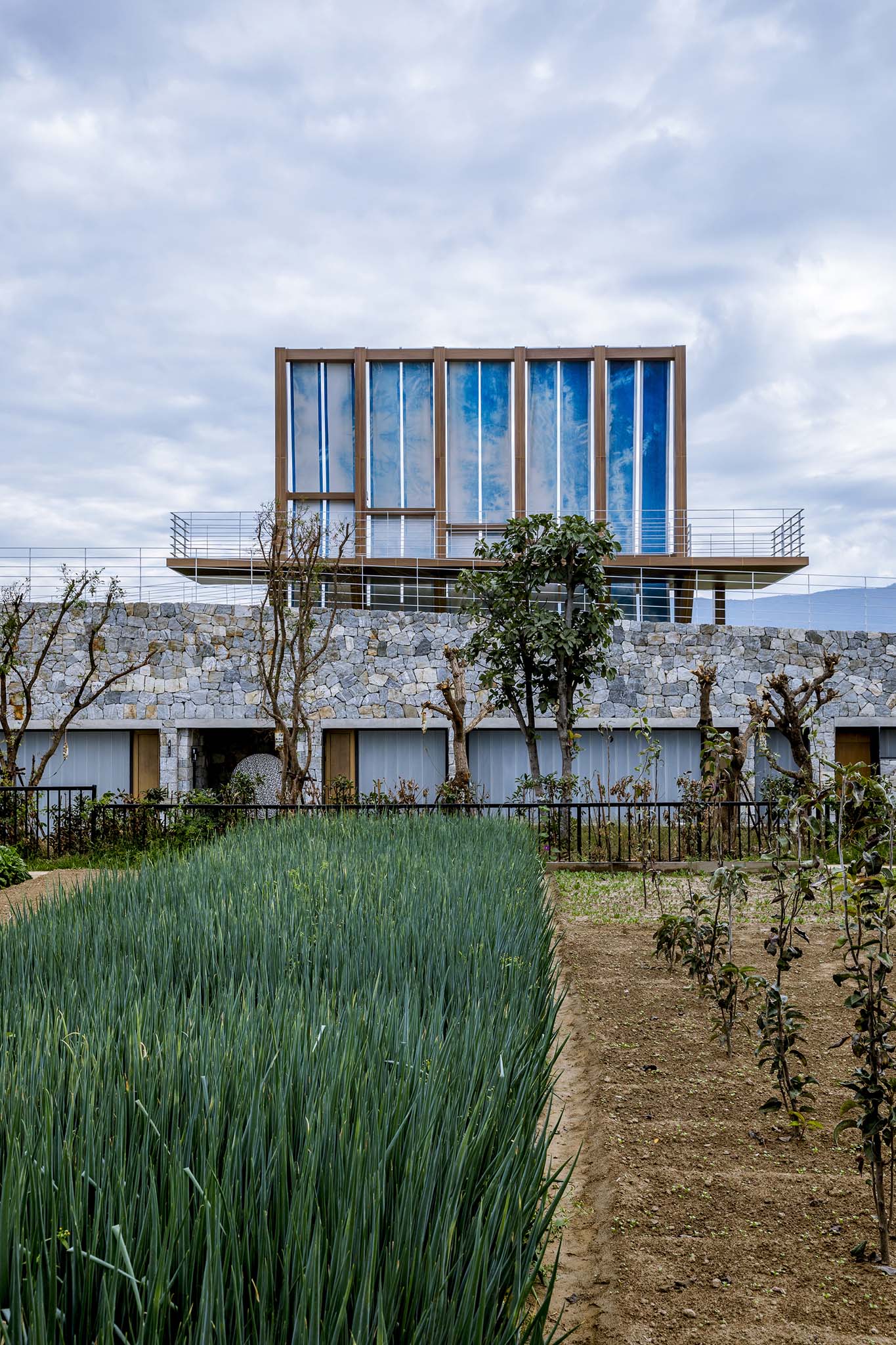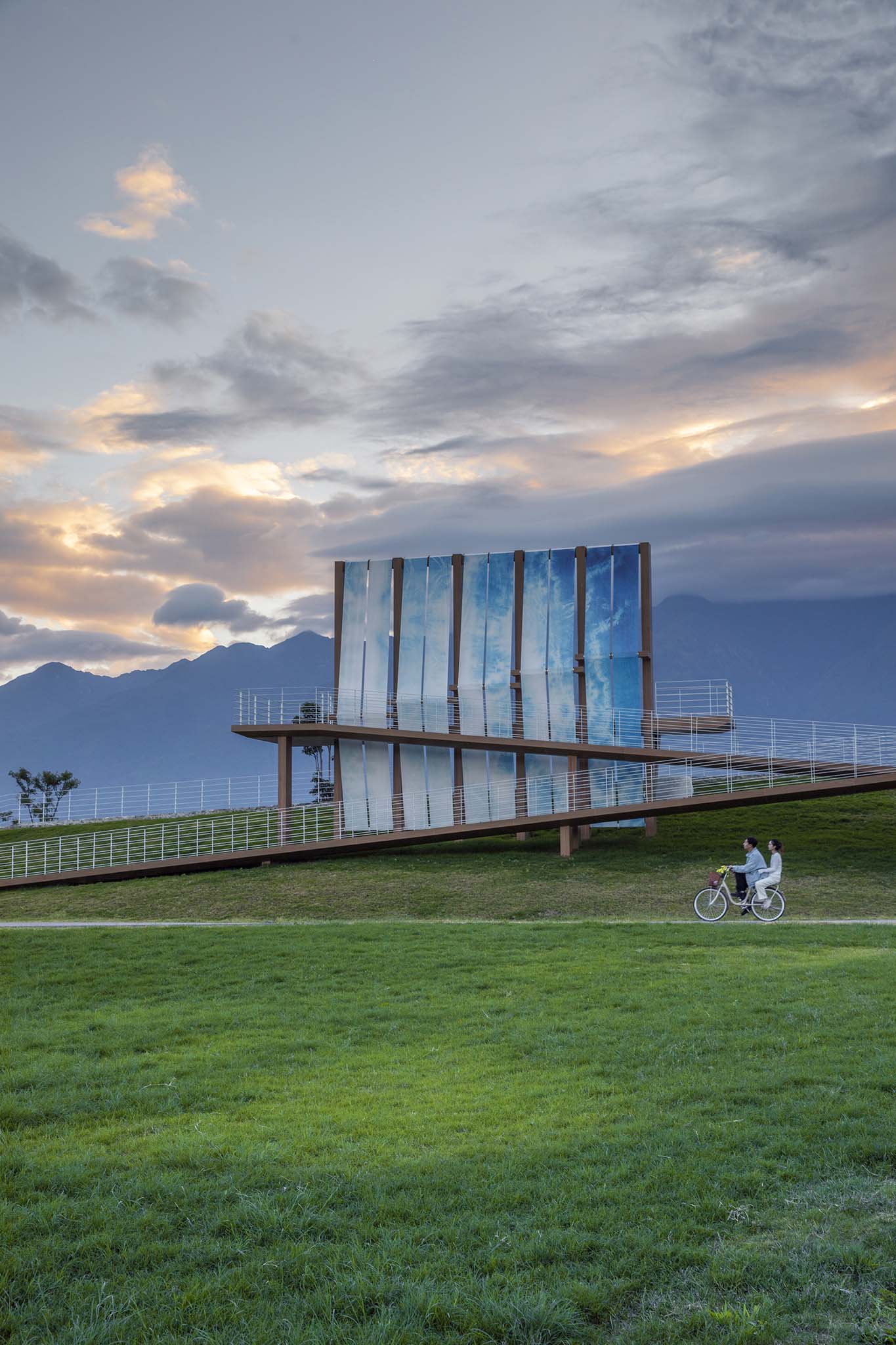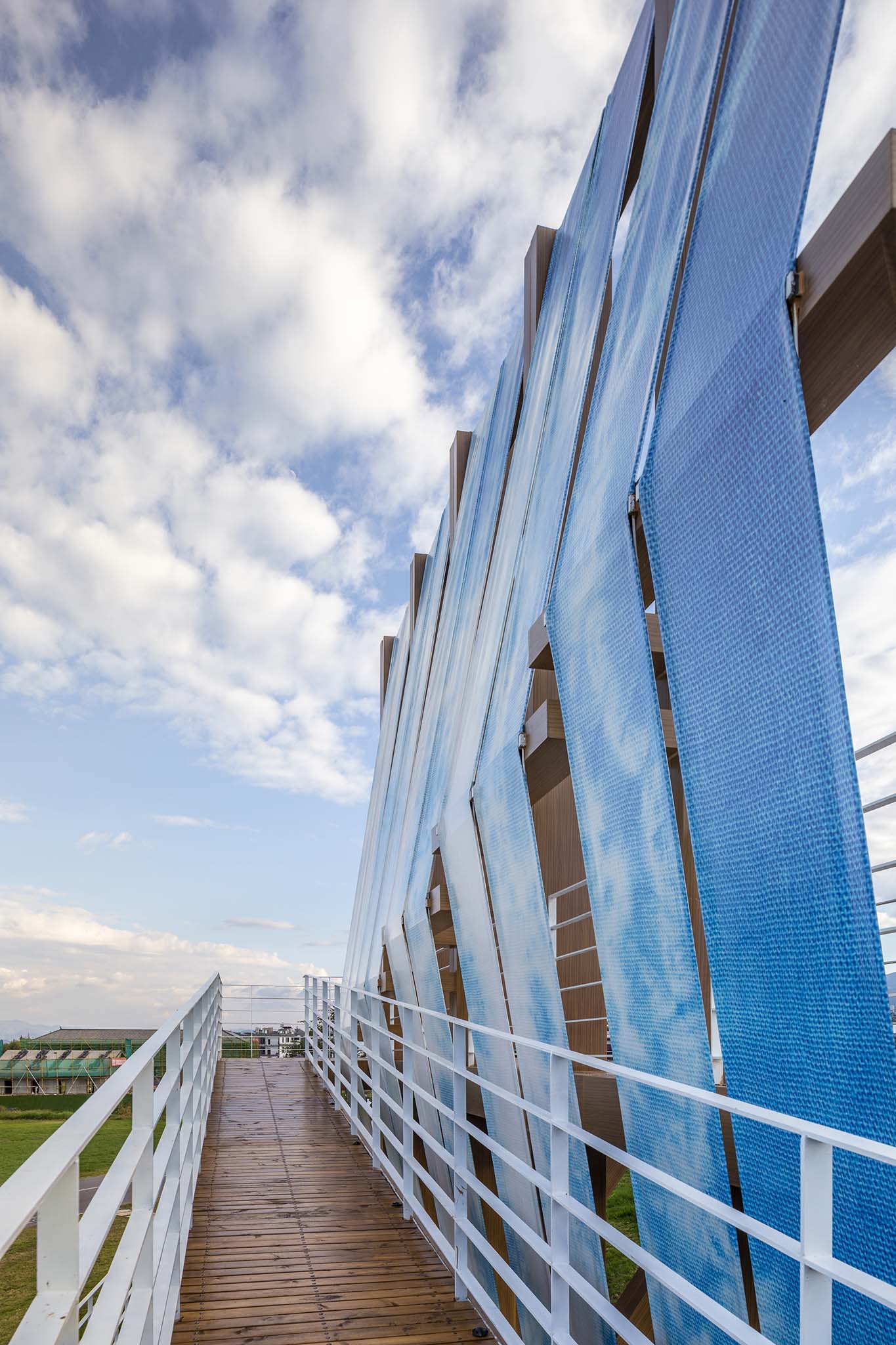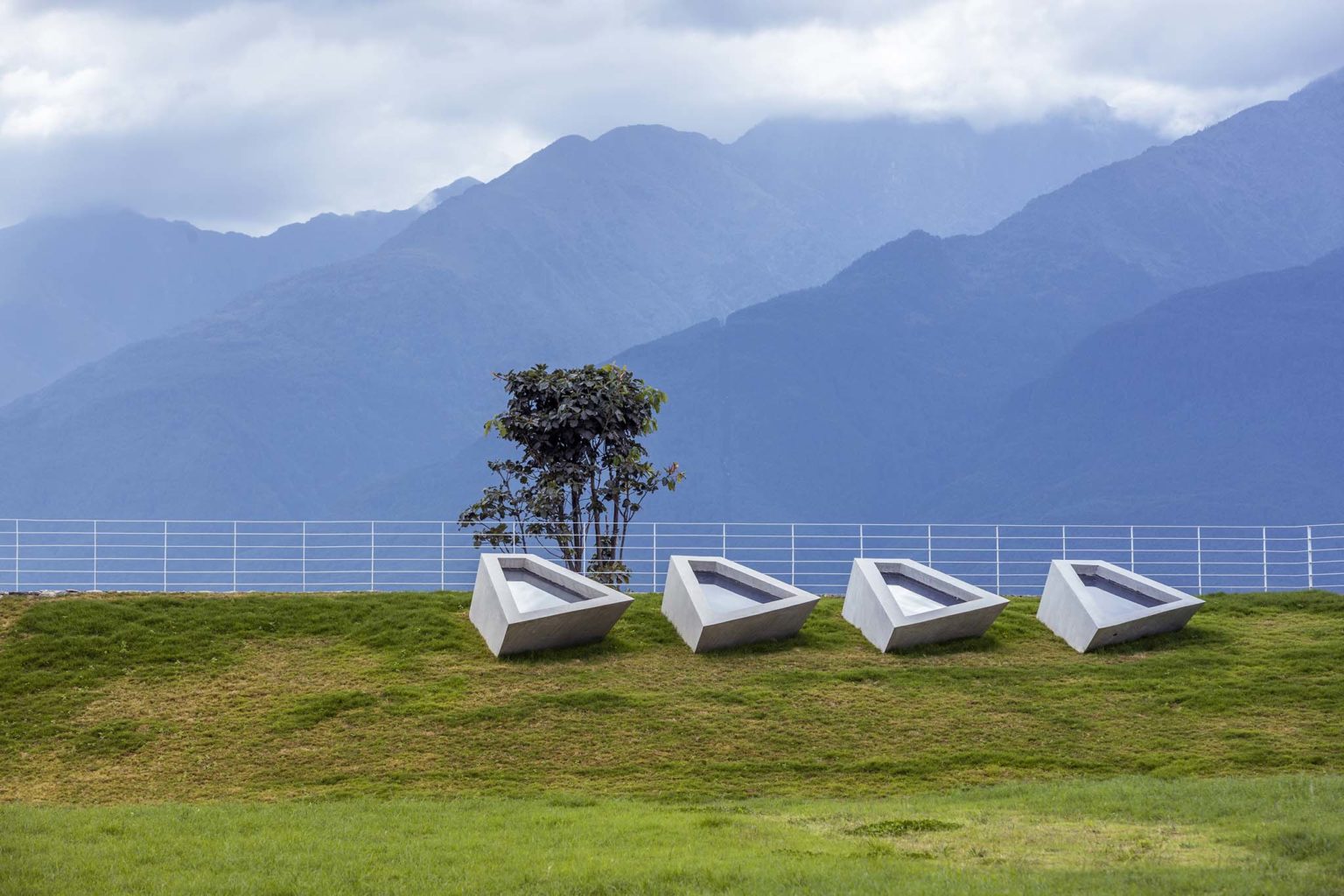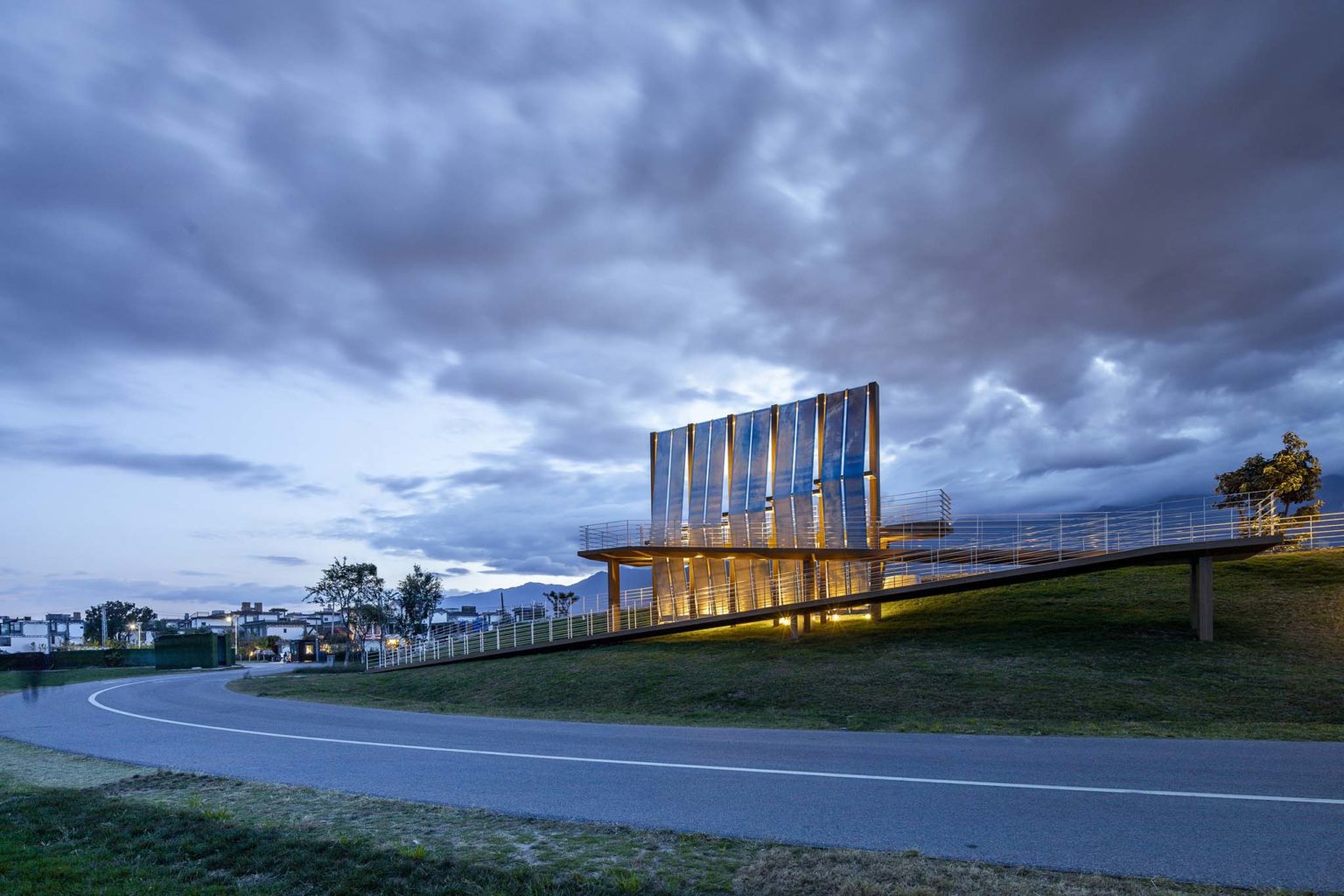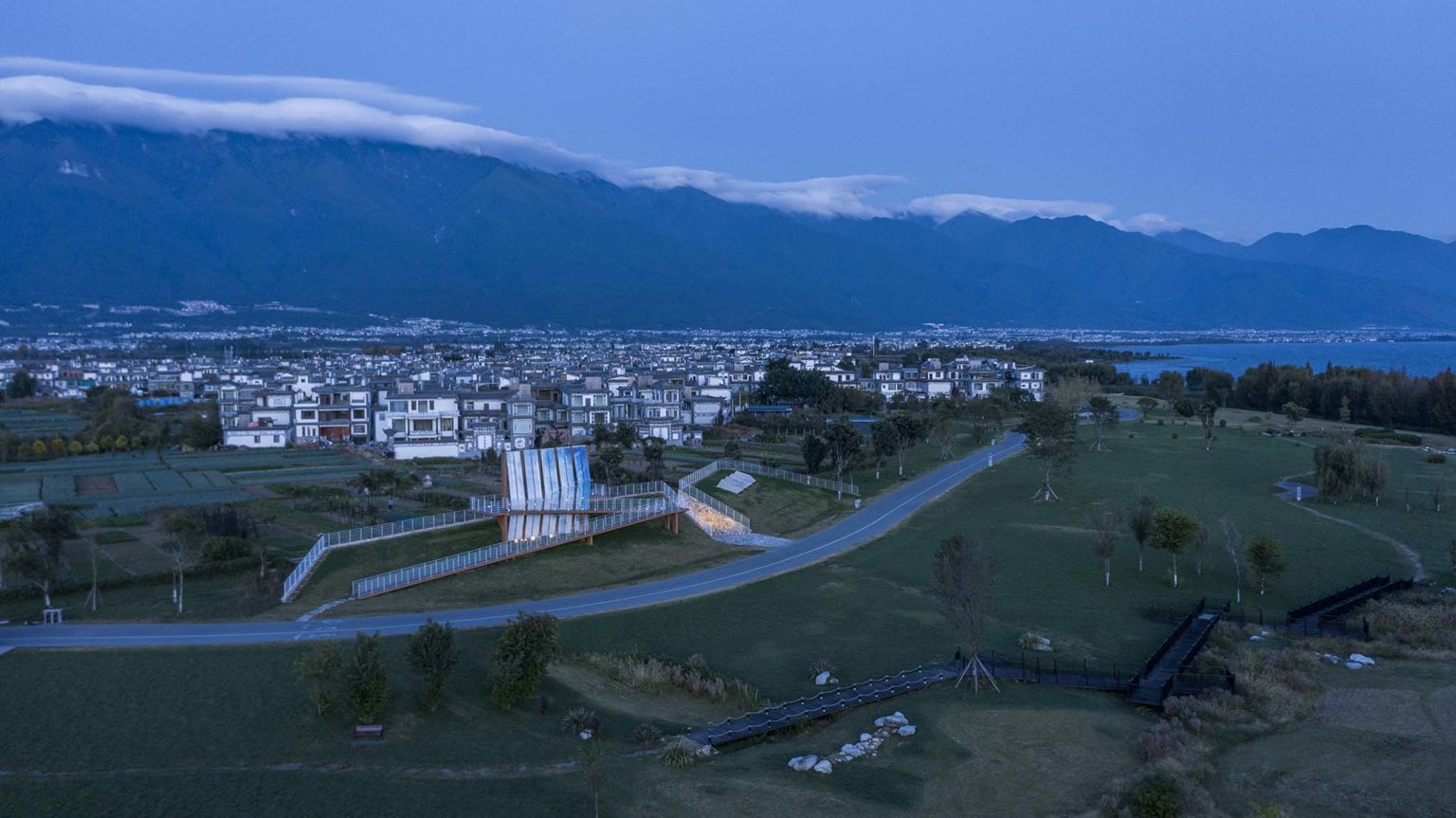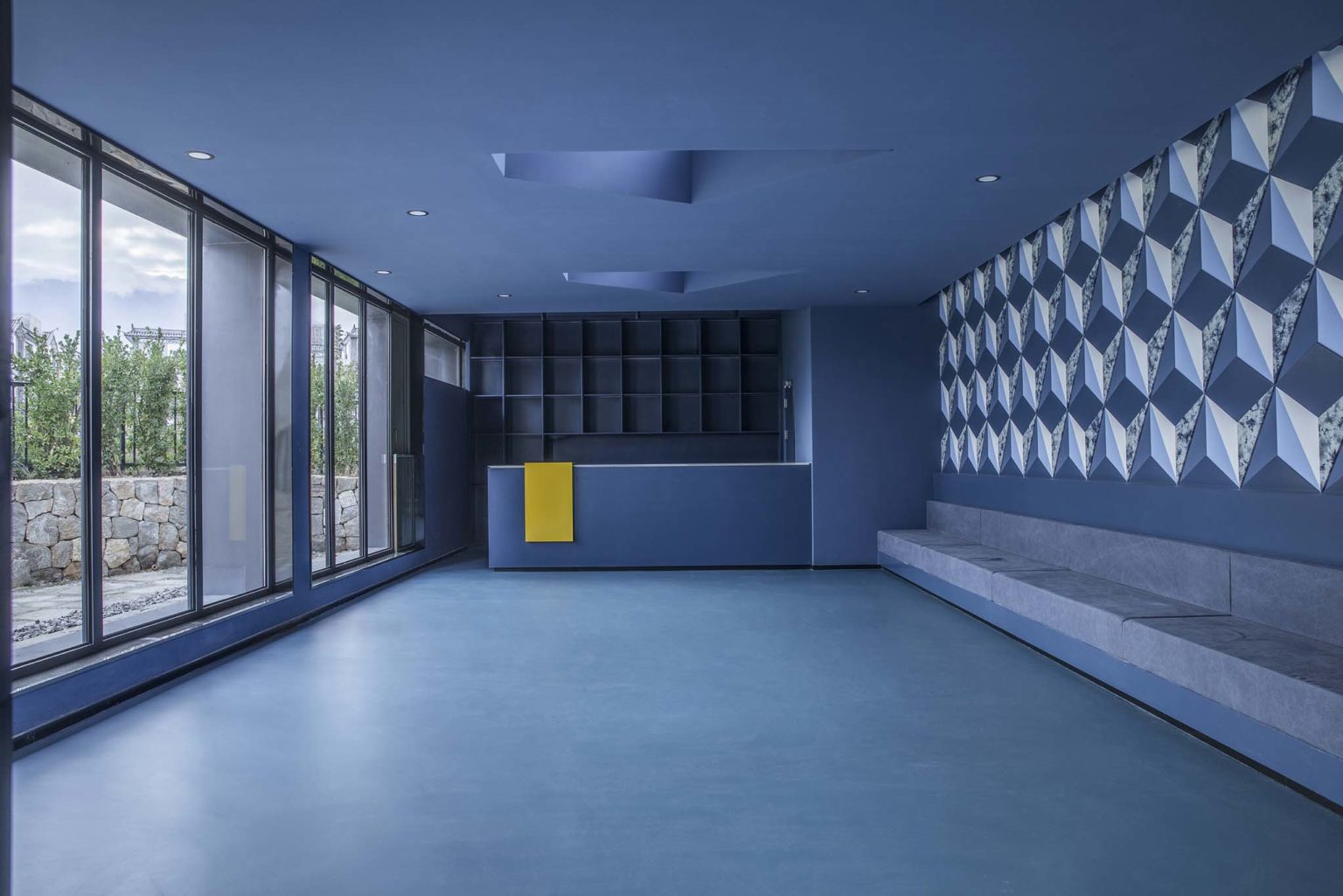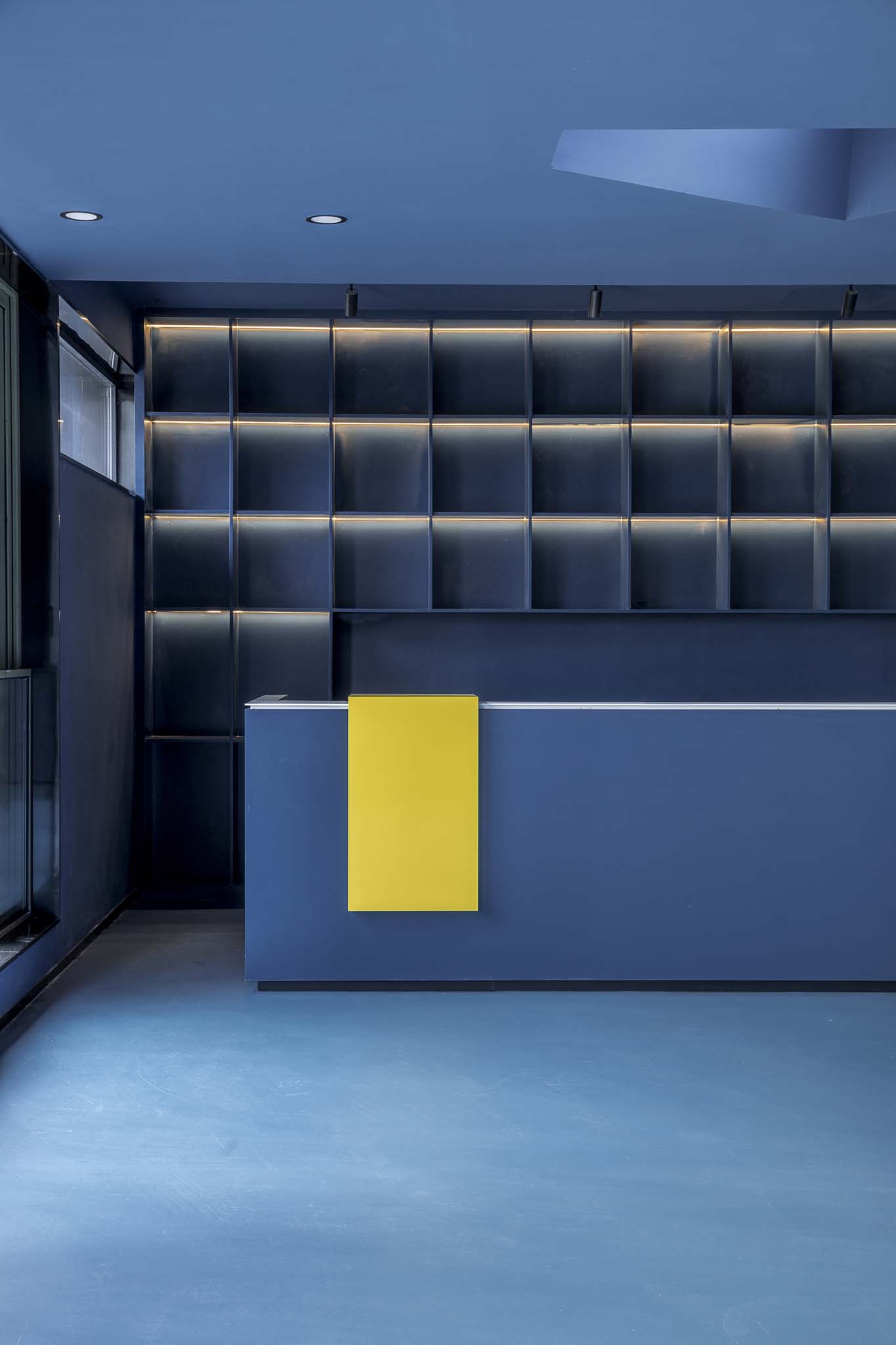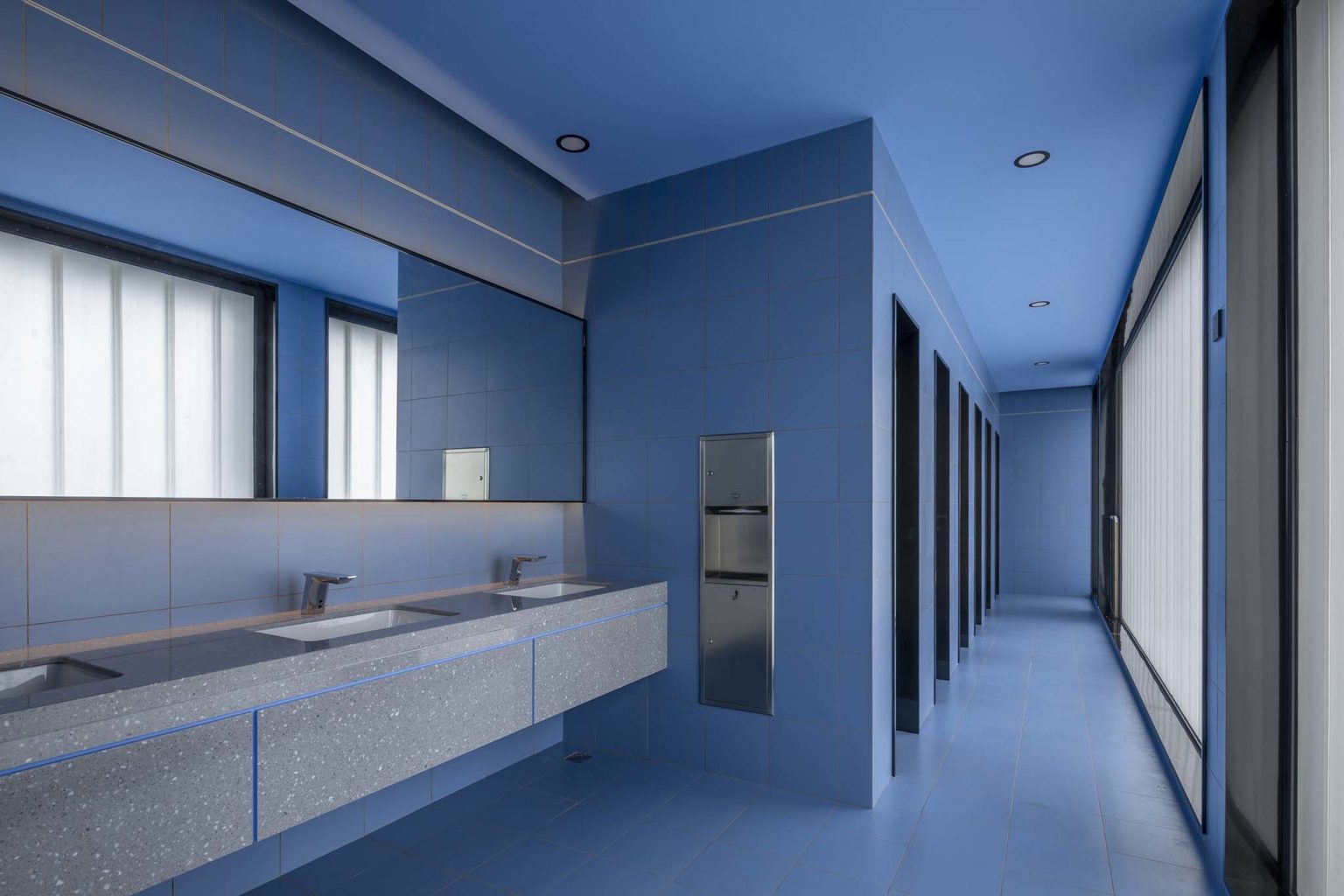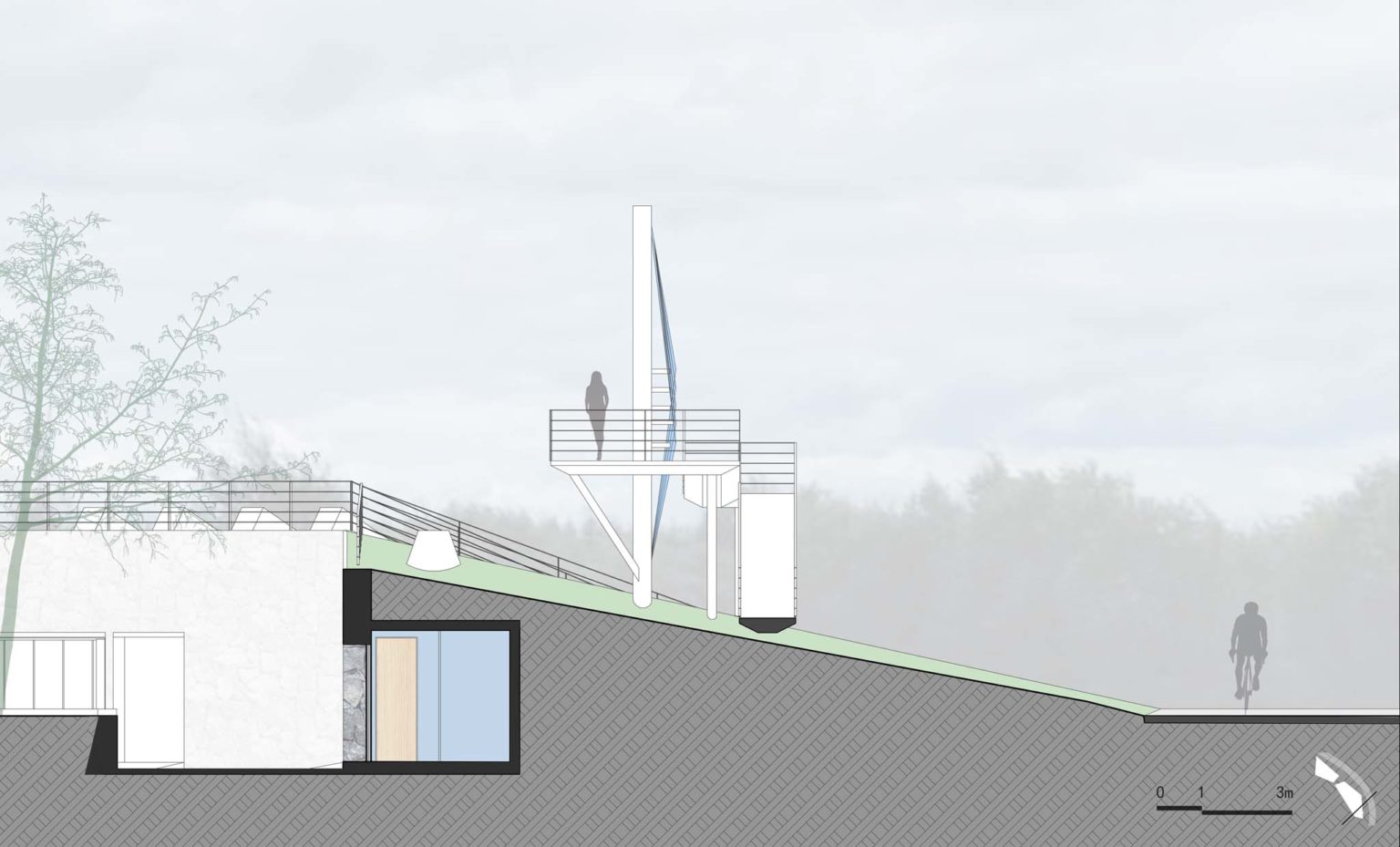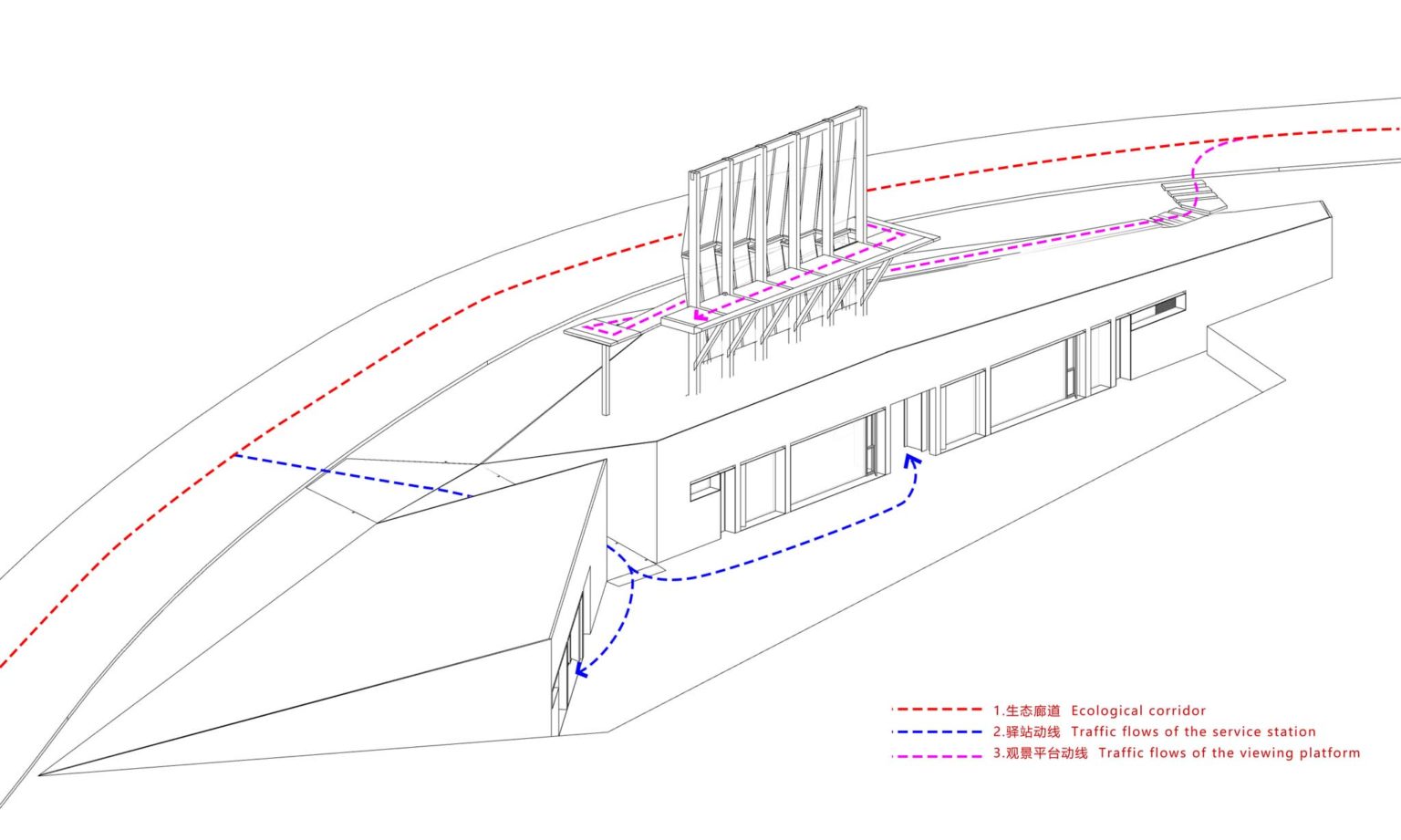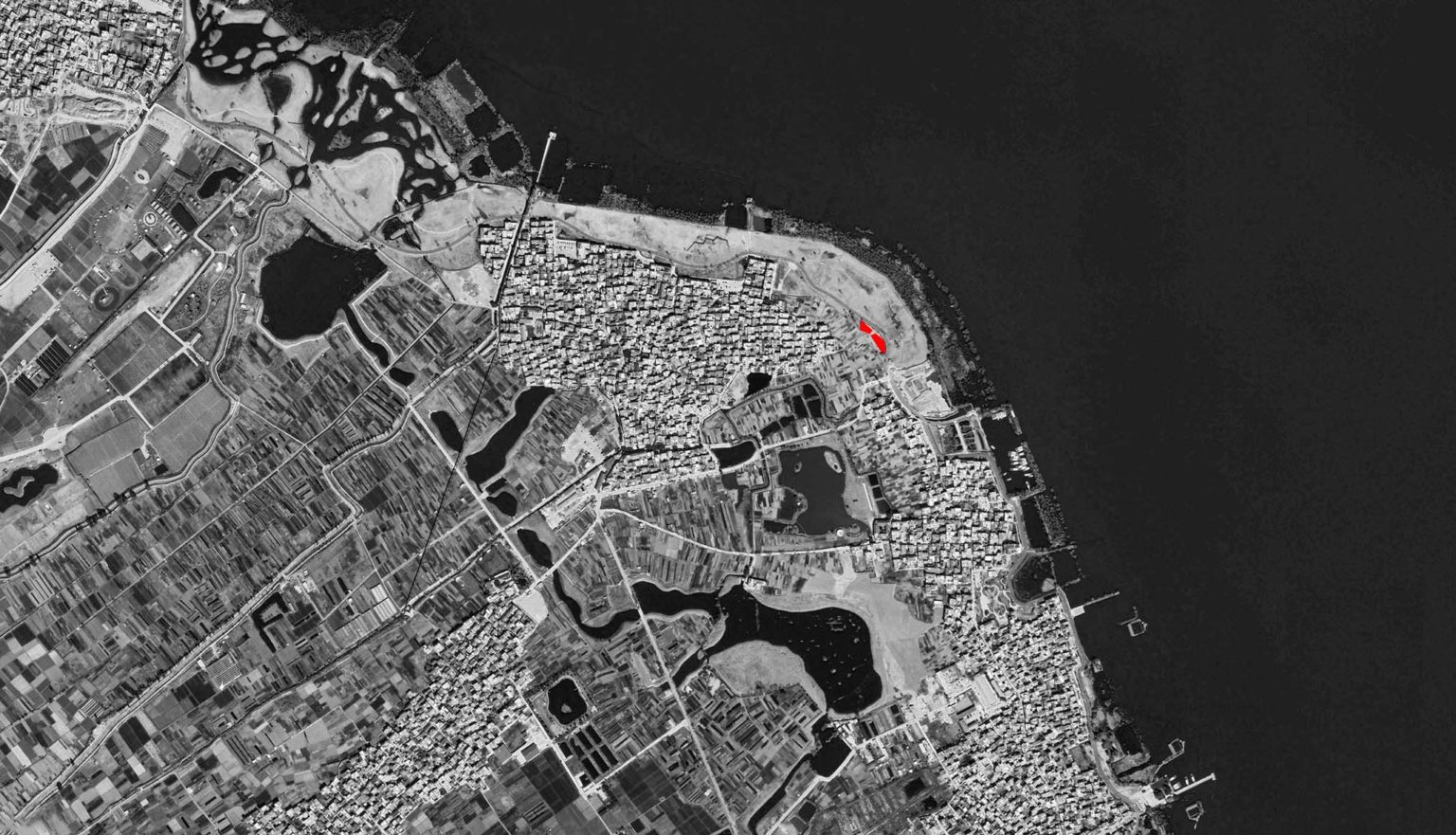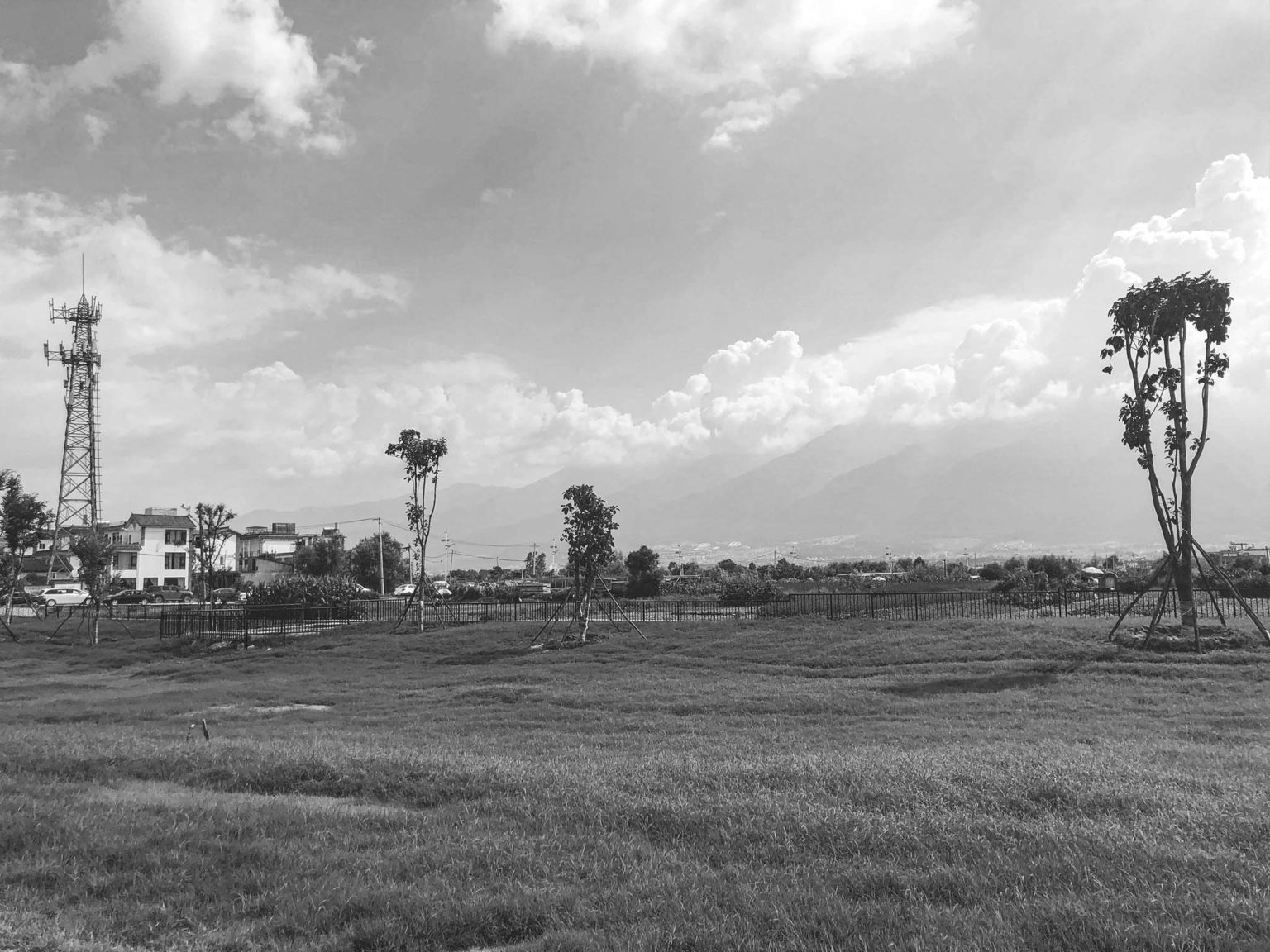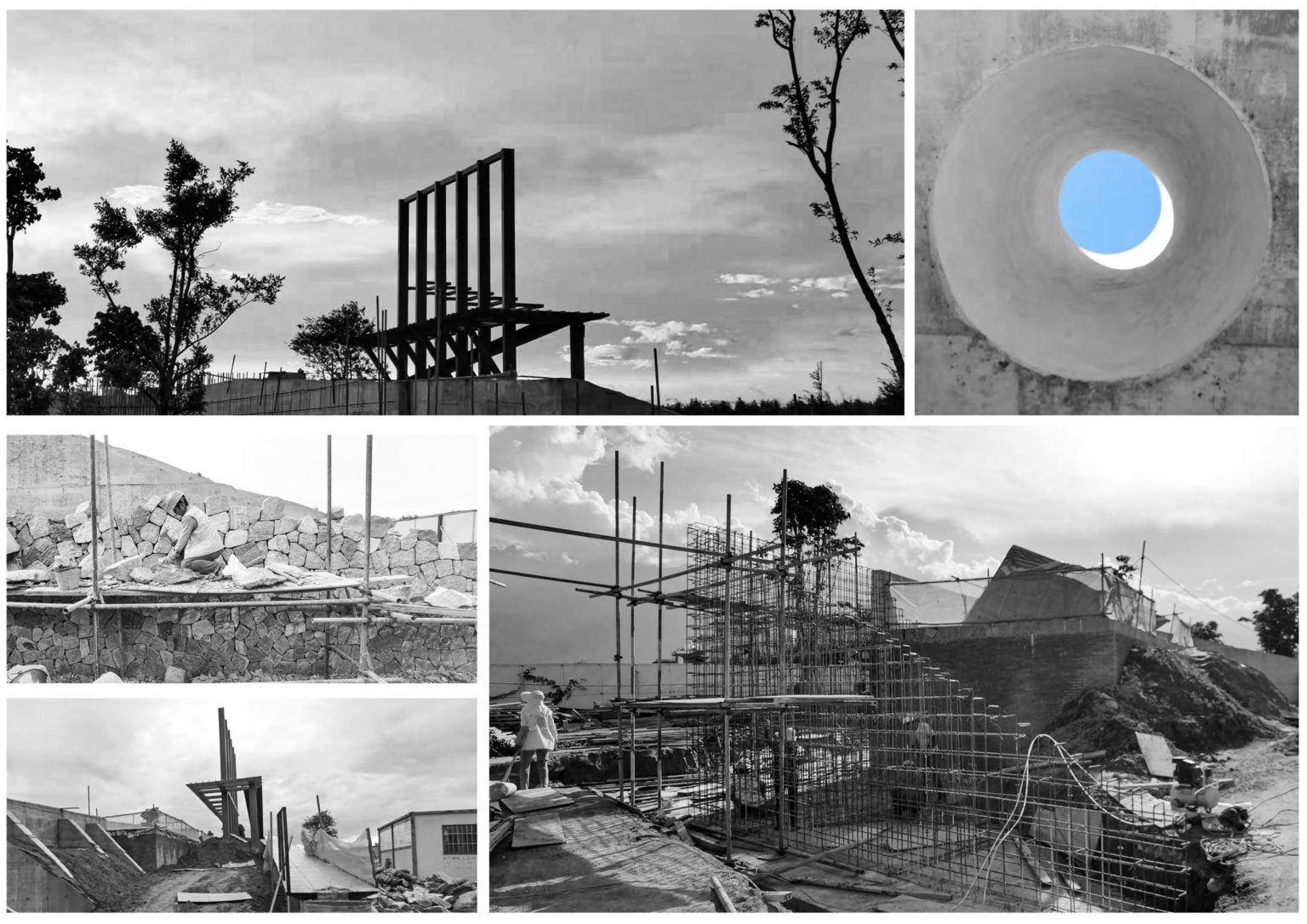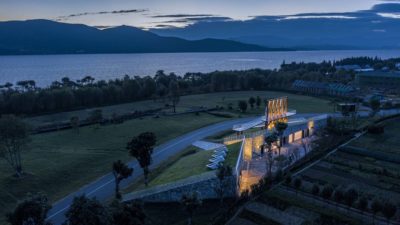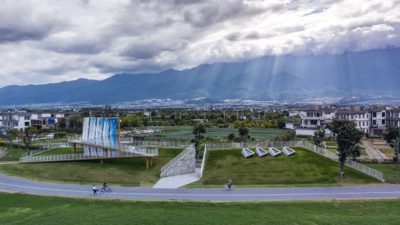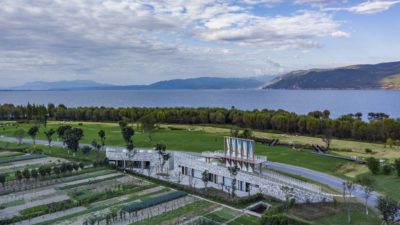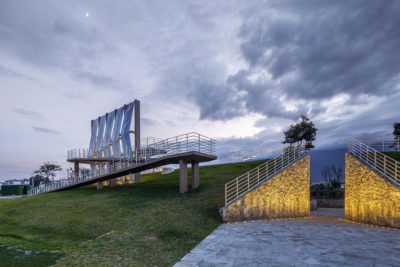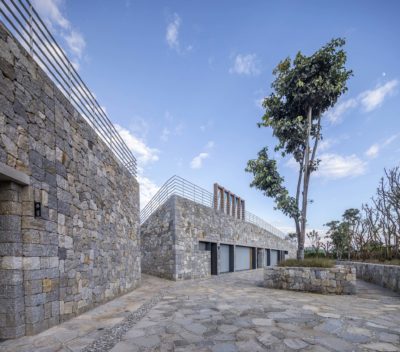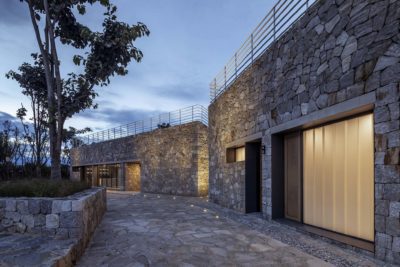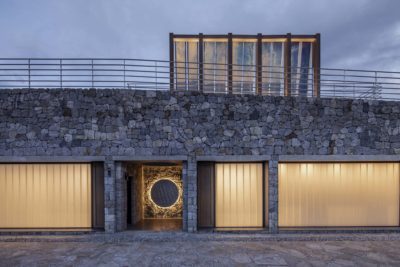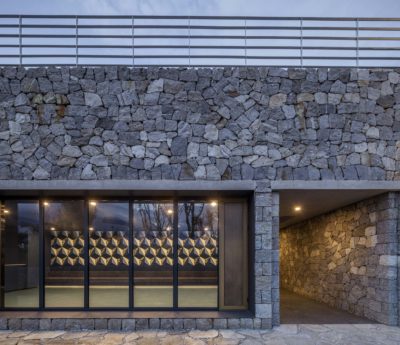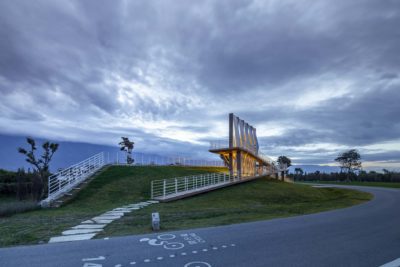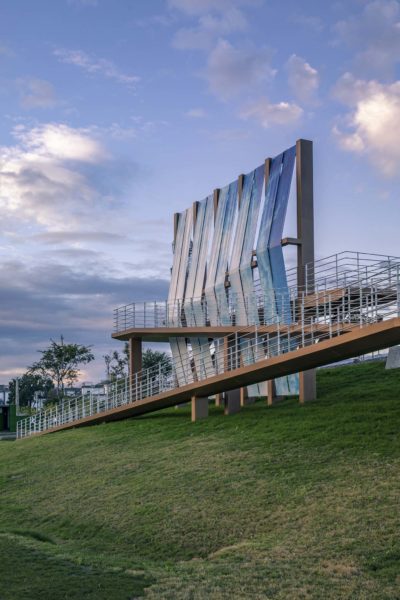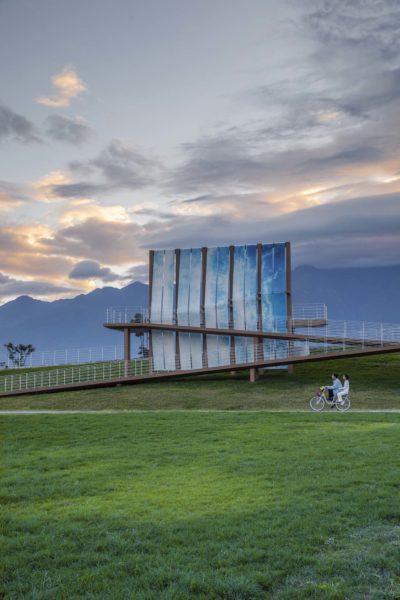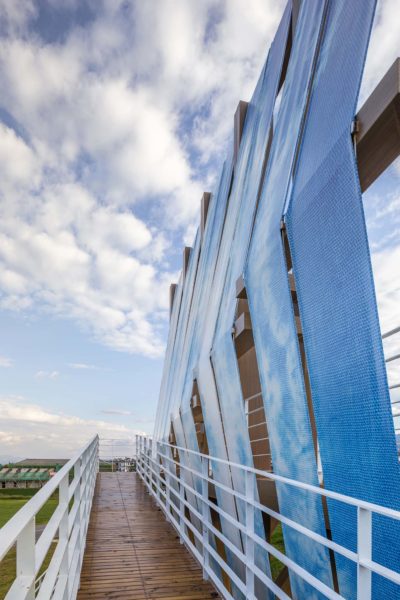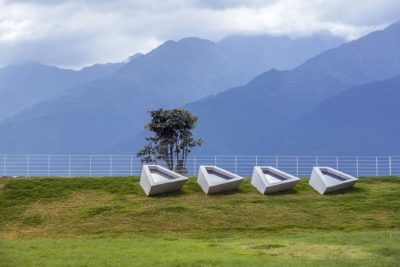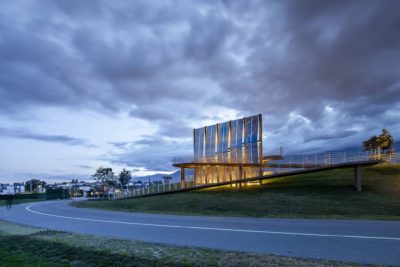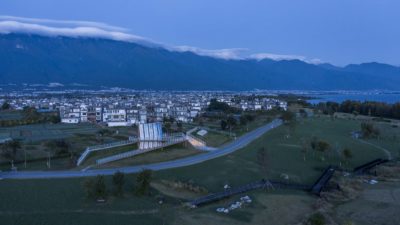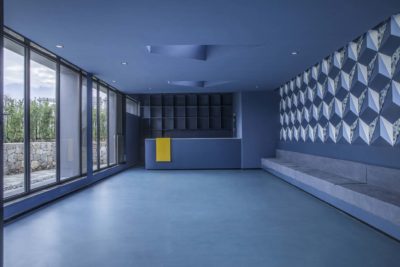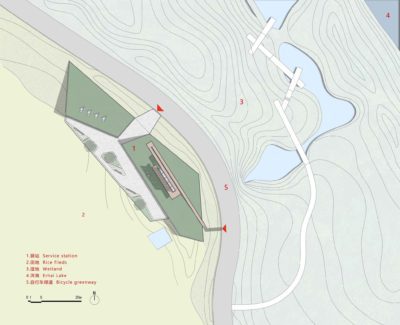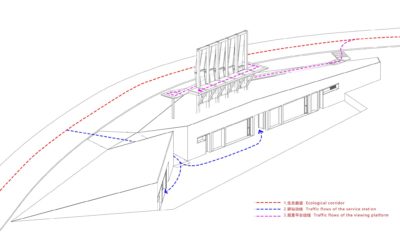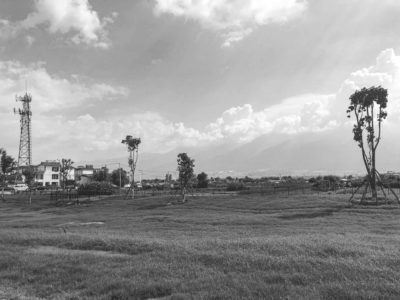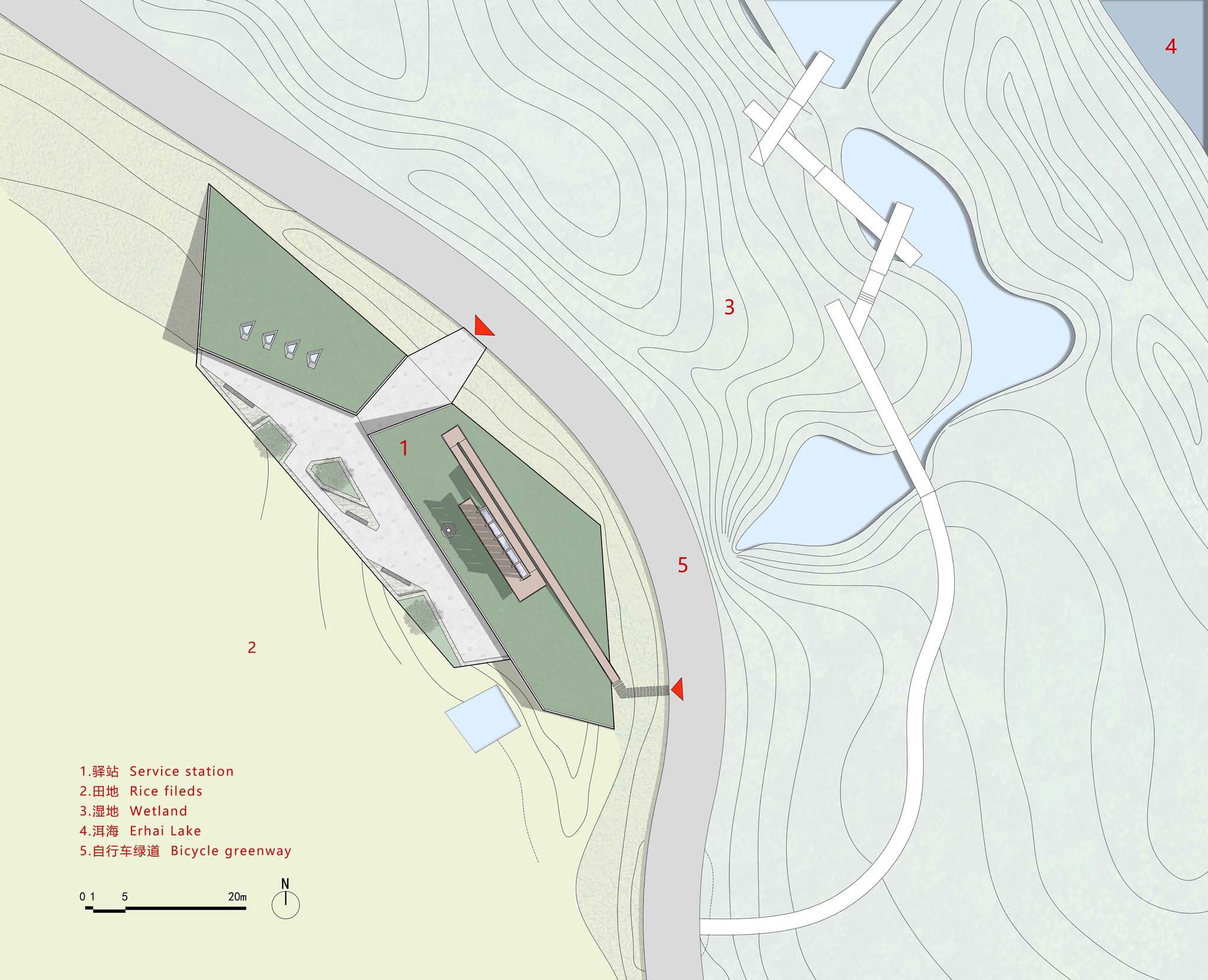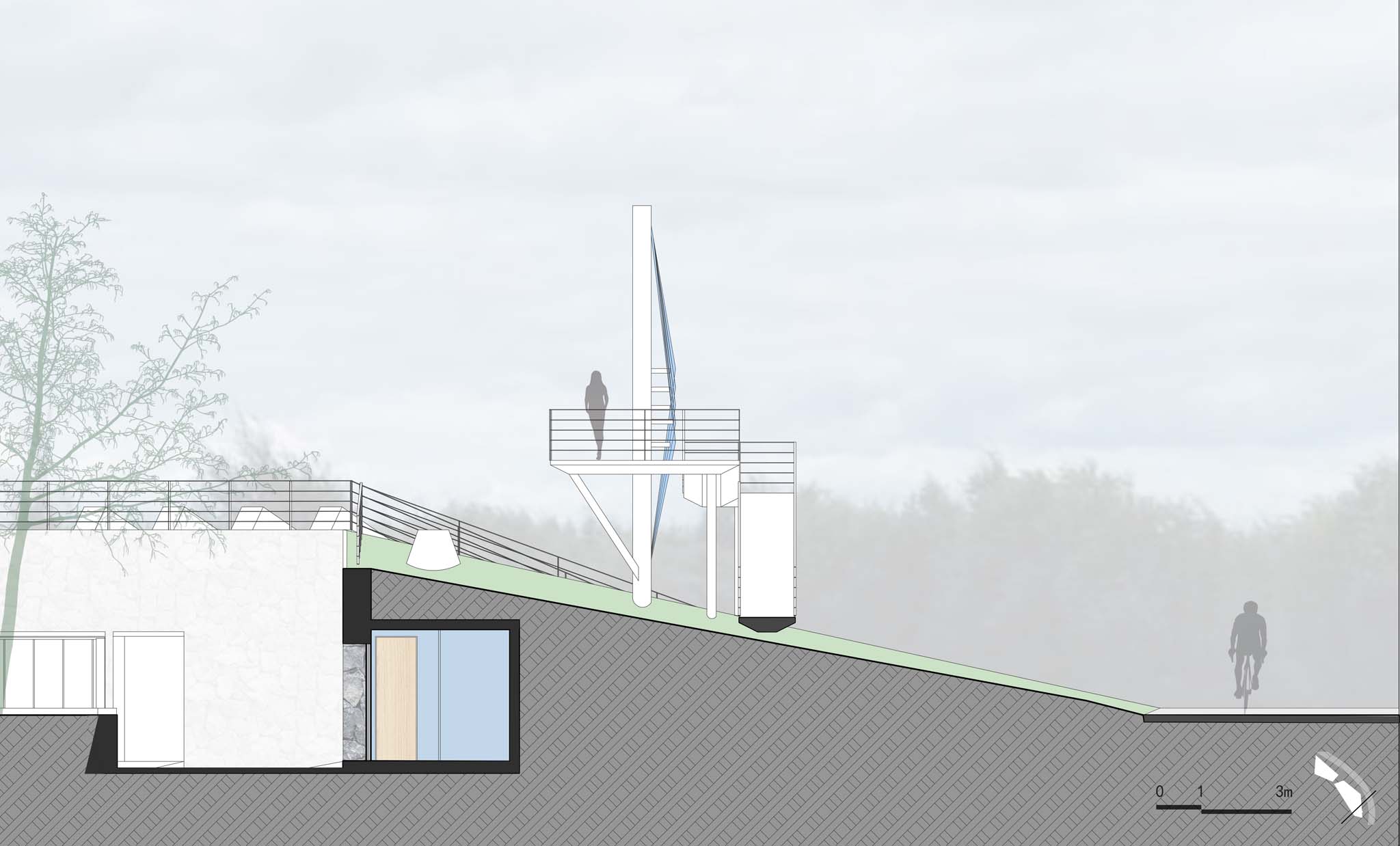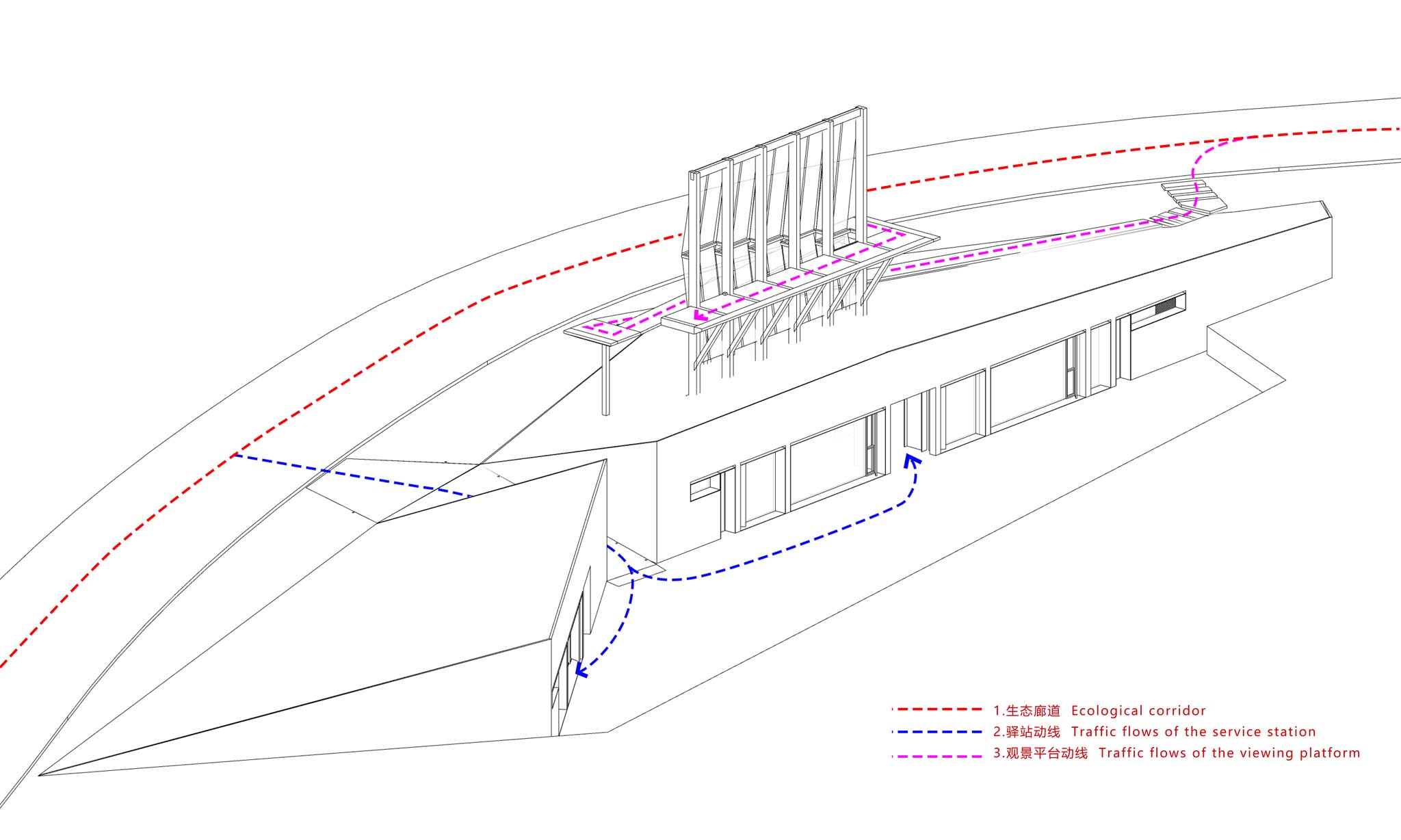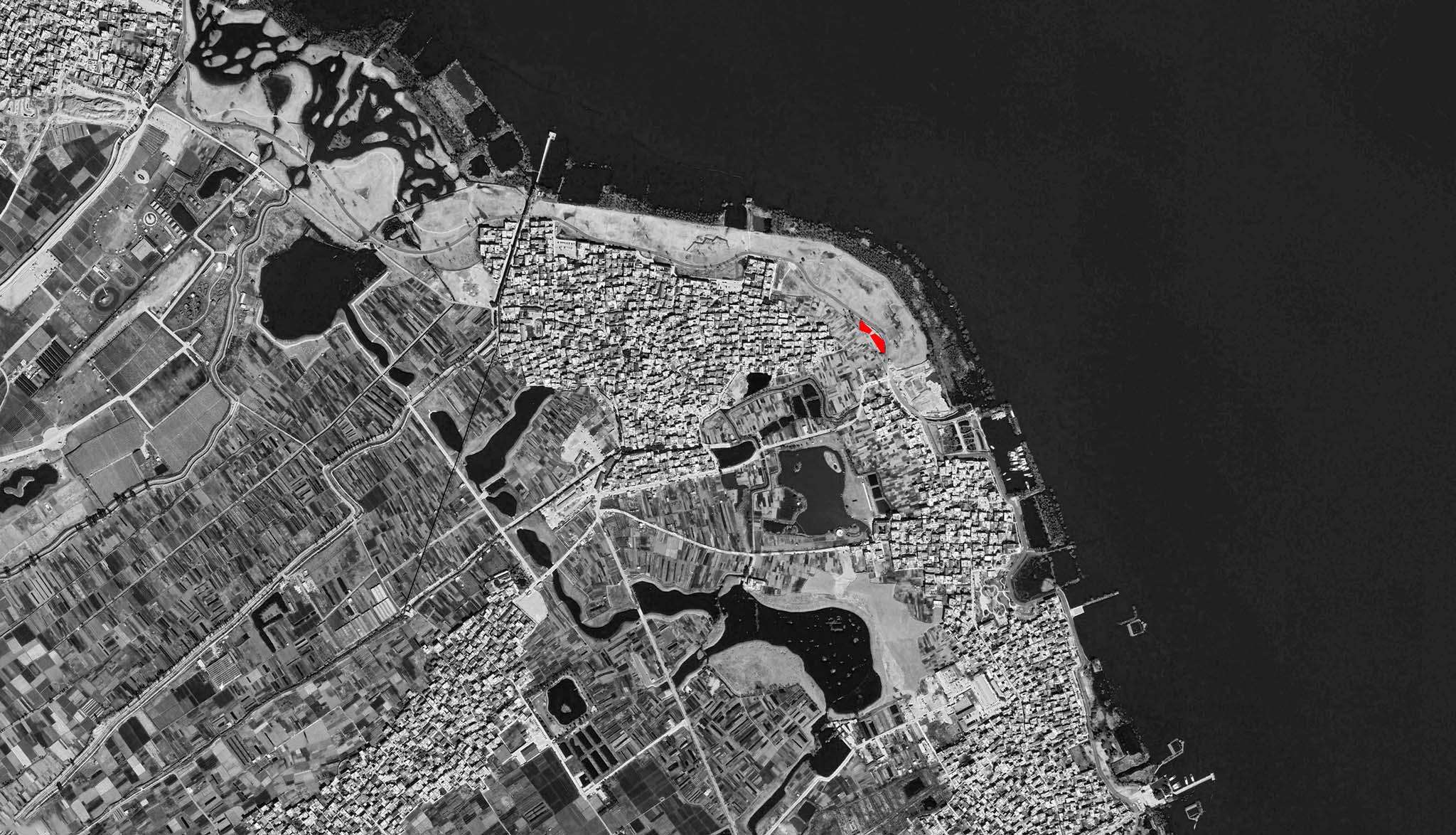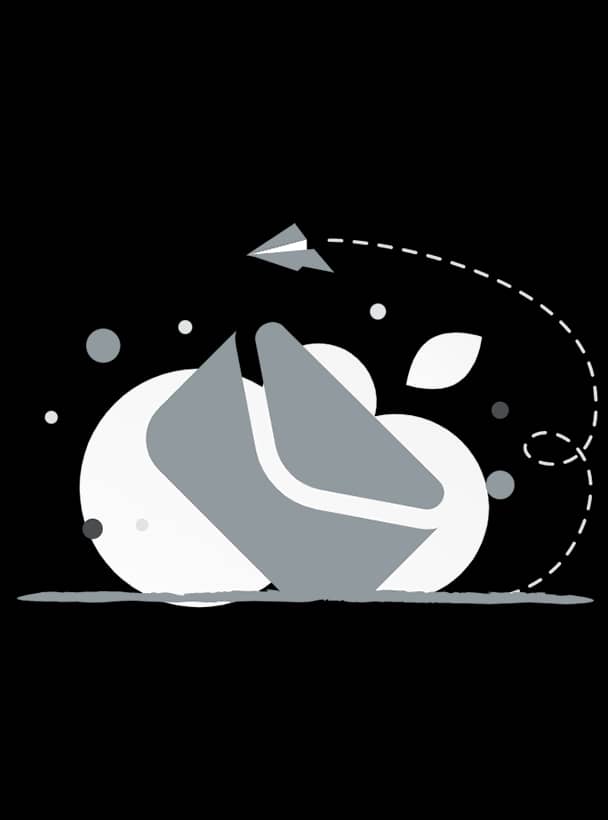Project Credits & Specs
- Architecture & Interior Design: 3andwich Design
- Photography: Jin Weiqi, 3andwich Design
- Location: Yunnan, China
- Area: 195 m2
- Year: 2021
More
- Principal Architects: He Wei, Chen Long
- Design Team: Wang Ziyi, Meng Xiangting, Wan Yuexiao, Sang Wanchen
- Structural Consultant: Pan Congjian
- Lighting Design: Z DESIGN & PLANNING
- Team Members: Qi Honghai, Liu Xianyu, Xu Bing, Chen Wen, Li Qiang, Gan Yunsong
- Partners: Beijing VAGE Institute of Architectural Design & Planning Co., Ltd
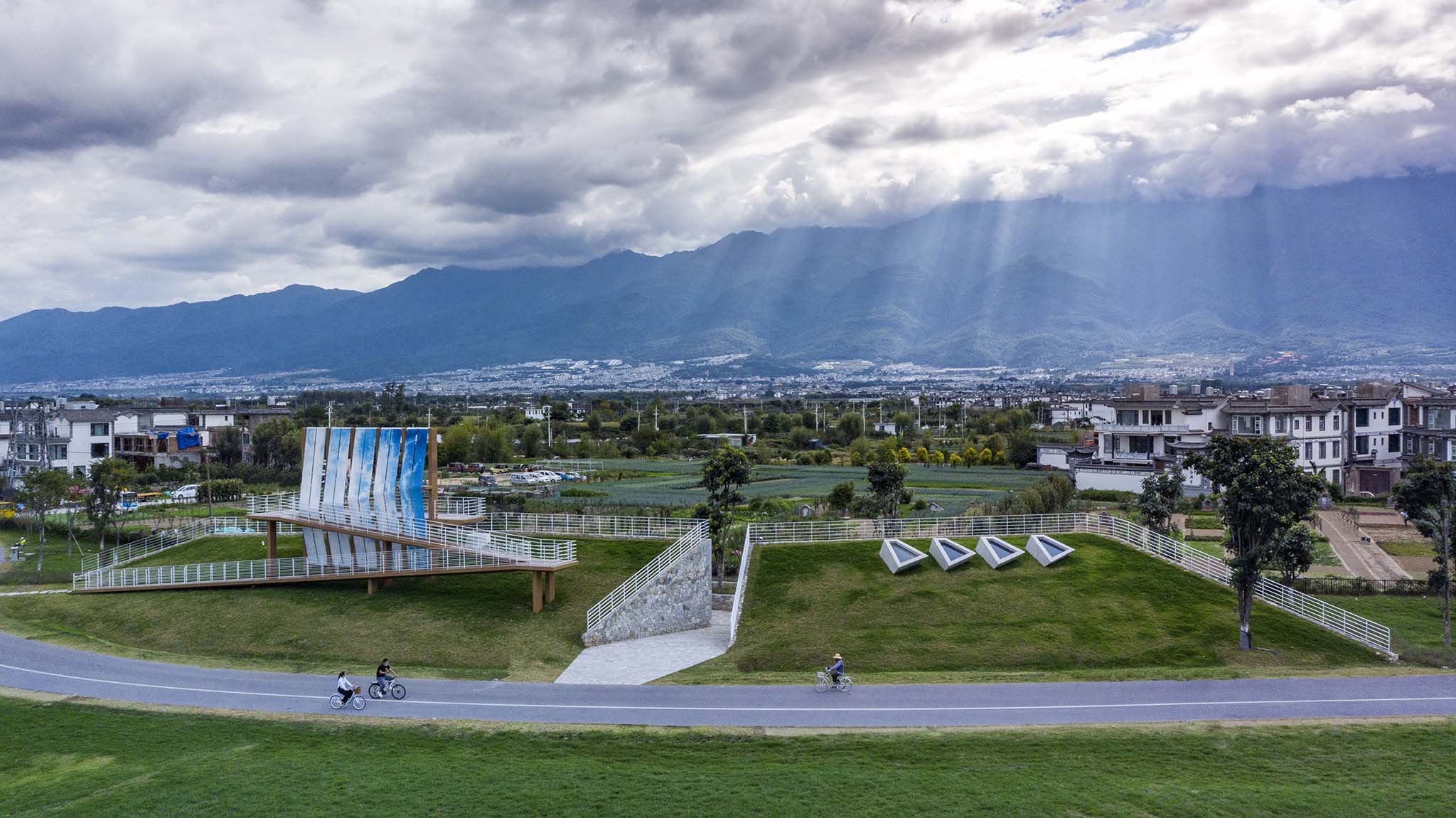
Project Description
Concept: memory of Erhai fishing sails
In a sense, this is not a standard building, which can be a structure or a device. The design inspiration comes from the response to the traditional sailboat of Dali Bai nationality. Since the closure of fishing in Erhai Lake, the traditional Bai sailboats have gradually withdrawn from the historical stage. The little white sails and uneven masts on the lake have also become people’s long memory, which makes one sigh. This year, there are no traditional sailboats in Erhai Lake, and most small fishing boats on the shore are idle. This historical transformation has attracted the designer’s attention, and hopes to use this project to commemorate the traditional life of “fishing near the water.”
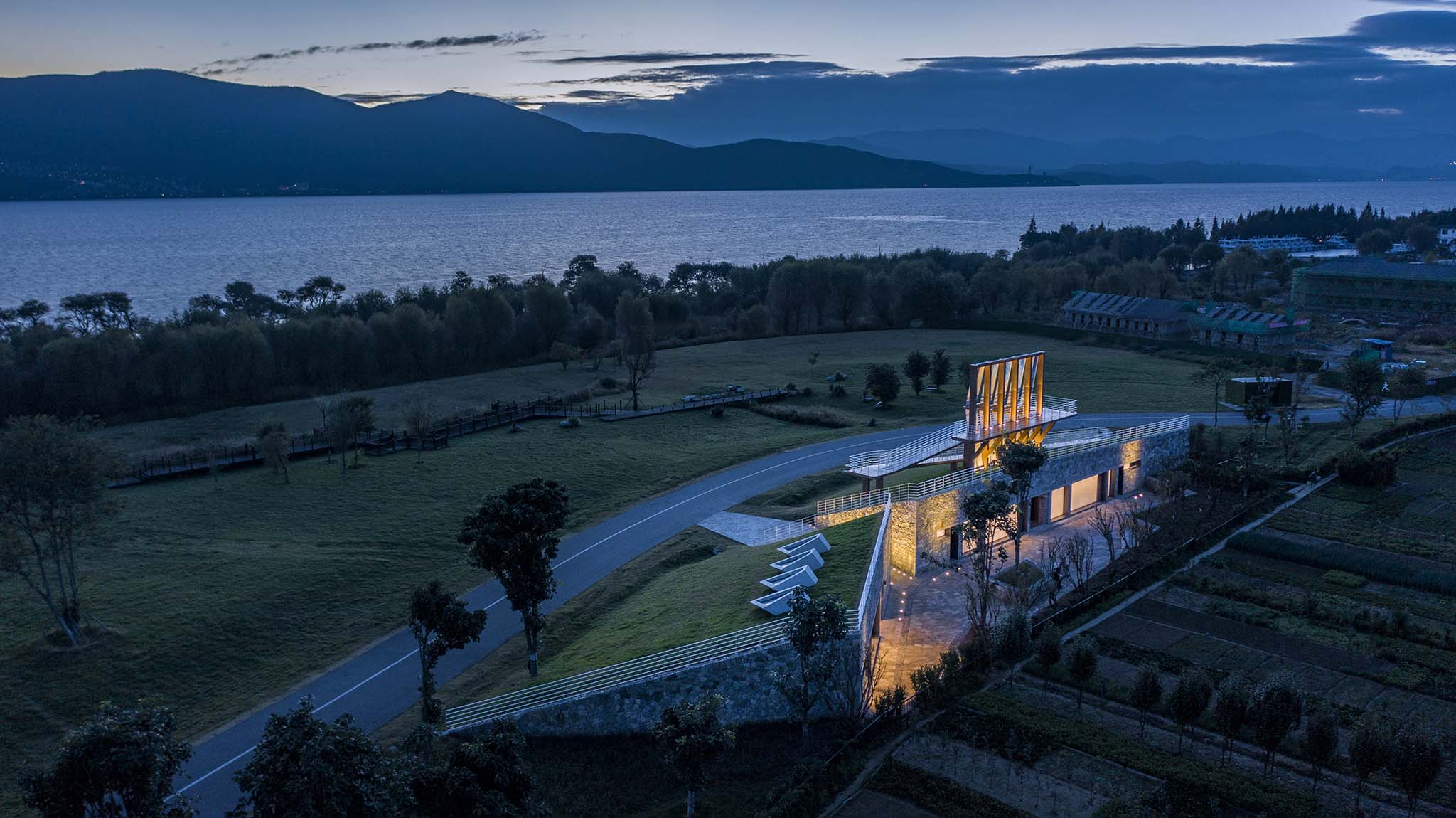
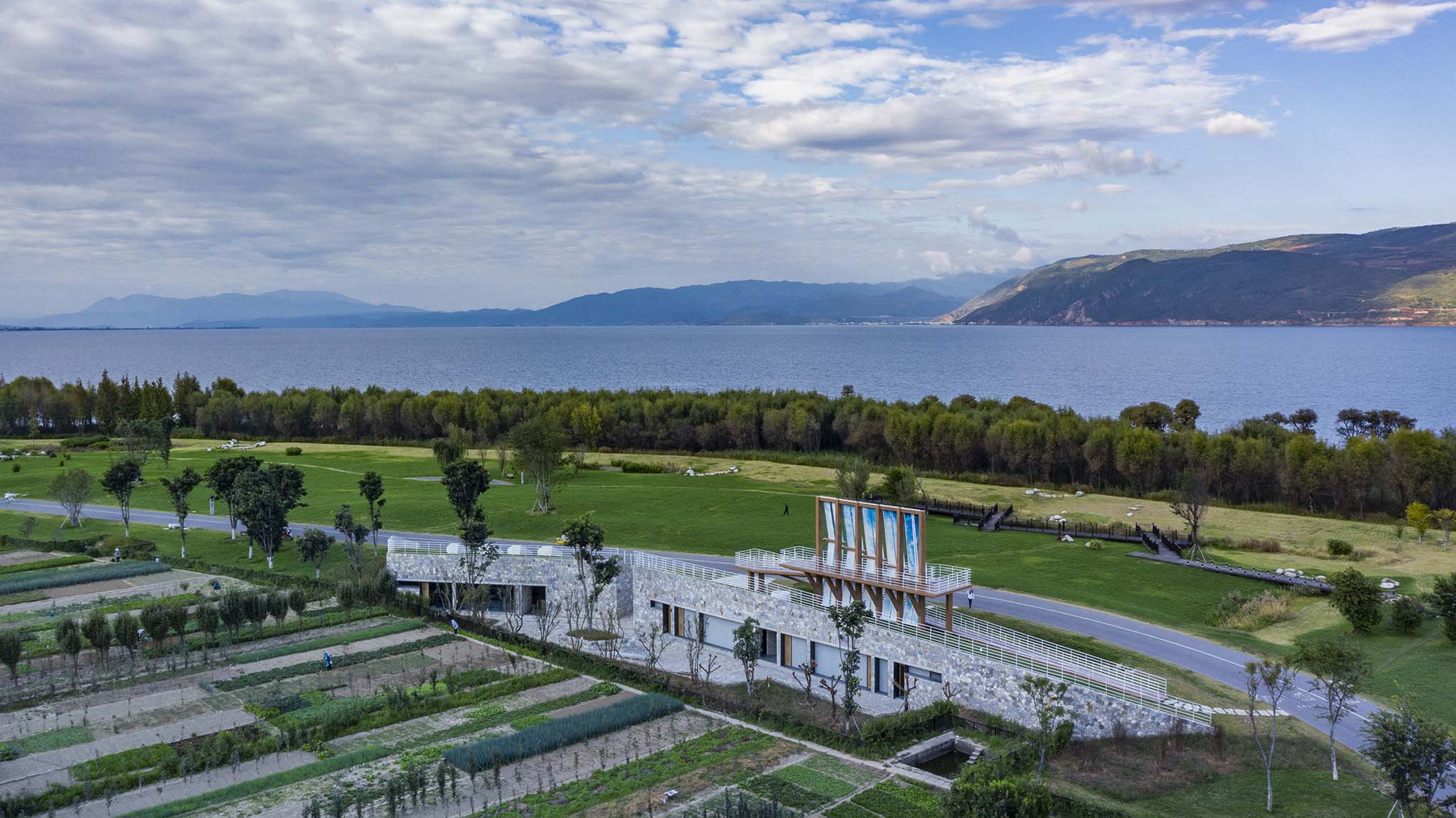
Based on the above concept, the designer puts forward the idea of “setting up a sail by Erhai Lake” and boldly responds to the site using artistic and expressionism: using the height difference of the site, burying all functional spaces semi-underground on the side away from Erhai Lake, and hide them by covering the soil on the roof; Exposed to the vision of passers-by is a sail of 9 meters high and 14 meters wide, which is set up on the bank of Erhai Lake like a sculpture. The cloth surface of the sail adopts the traditional tie-dyeing pattern of the Bai nationality, while the blue and white colors echo the sky of Dali. In the design, the sail can be replaced. In the future, patterns can be changed in combination with different activities to make architecture a medium.

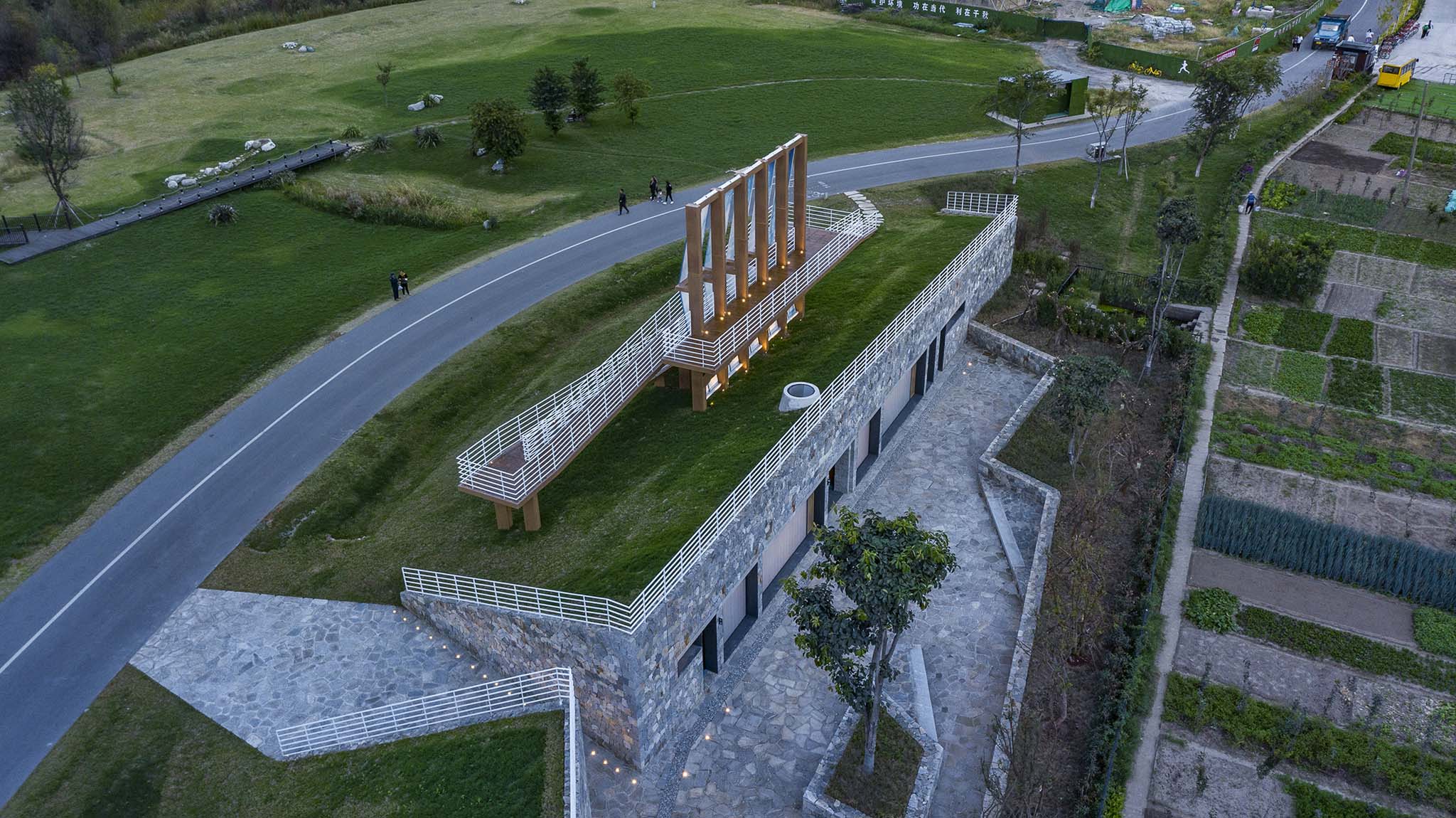
Architecture: hidden under a green hill
The service station building has three functional spaces: a semi-underground covered public restroom and leisure bar, and an observation platform standing on the hill. Through the treatment of site elevation difference and building covering soil, the design team has formed the use moving lines of different functional spaces: on the east side, a ramp is set near the bicycle lane to guide people to the viewing platform; The middle part of the earth covered building is disconnected, and the channel is enclosed by a V-shaped stone wall on the plane, leading to the outdoor space facing Cangshan Mountain on the west side, as well as the public restroom and leisure bar. The two paths correspond to the mountain climbing crowd and the resting crowd respectively, and the moving lines are clear and do not interfere with each other.
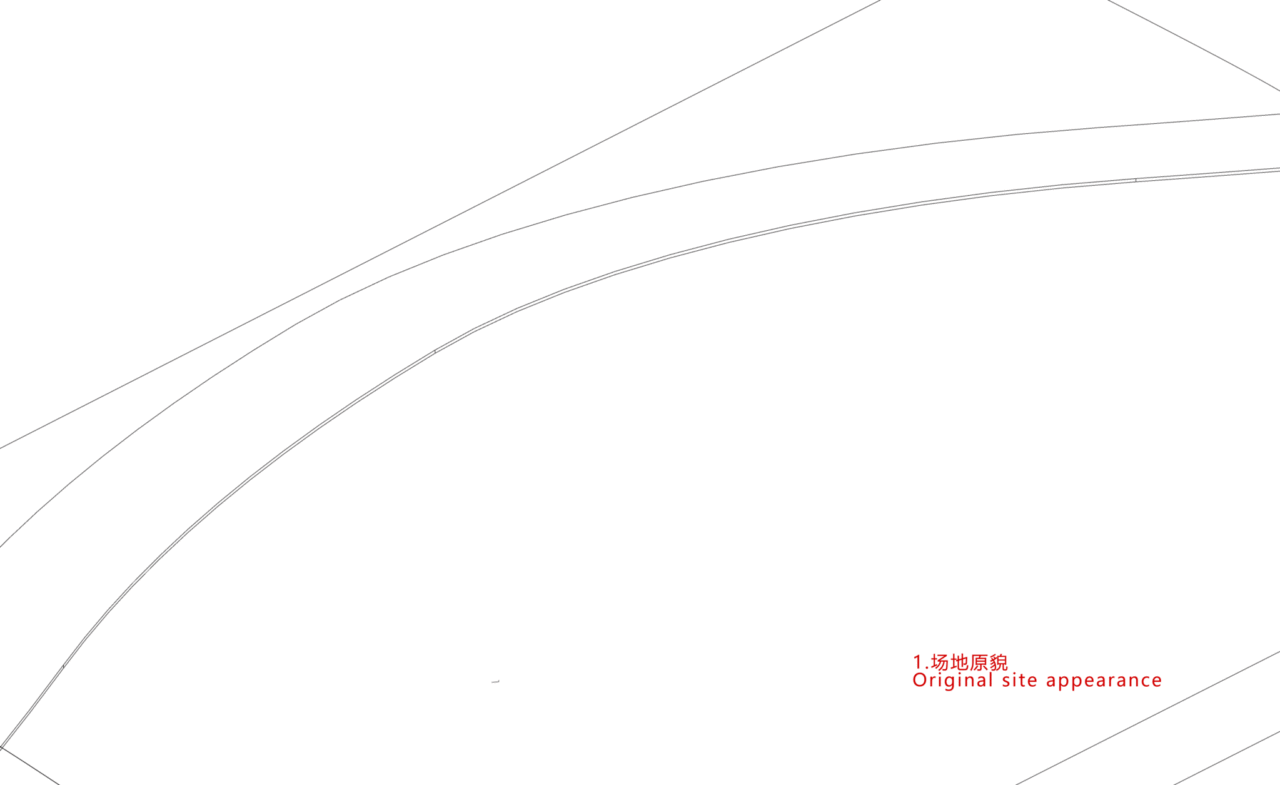
The main functional space of the building is hidden under the hill. The entrance is on the west side and back to the bicycle lane, relatively quiet and private. The main body is a reinforced concrete structure, and the external wall adopts local masonry practice; The restroom and leisure bar respectively use U-glass and high permeability glass as daylighting medium to form different degrees of privacy and meet their respective functional requirements. The wooden window system provides ventilation for the semi-underground space without damaging the facade rhythm. The building is equipped with polygonal skylights, which not only bring more daylight to the interior but also add visual changes to the green “hill” on the roof of the building. The outdoor space on the west side is also paved with local rubble, and the elevation is 1.5m lower than the surrounding, forming a good sense of enclosure. During the design process, 4 trees in the site are reserved to provide shade for the site, and the tree pool is used to form rest seats.
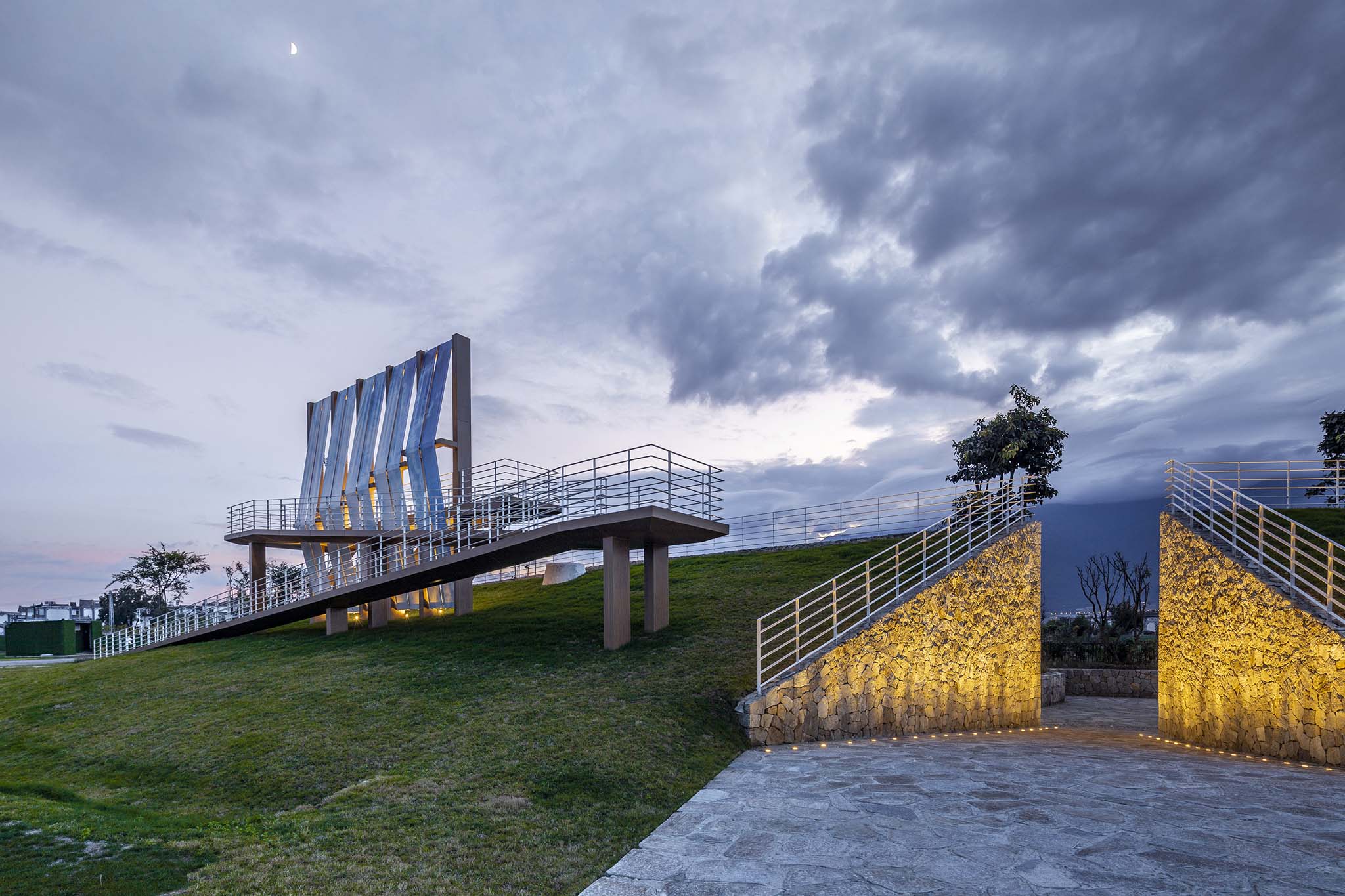

Viewing platform and sail: sign and look at the high point of Erhai Lake
The roof of the building is inclined and covered with soil to form a micro terrain facing the greenway and Erhai Lake. Visitors can walk, sit, and talk on this green hill. The viewing platform and sail device stand on the green hill and become the symbol of the area. They are supported by 6 steel masts, and the sail is composed of 10 outdoor canvases with custom tie-dye patterns hanging on both sides. Through the Z-shaped ramp, people can reach the viewing platform at an elevation of 6.5m. This is the slightly high point of the greenway park around Erhai Lake, where people overlook the scenery of Erhai Lake over the treetops.


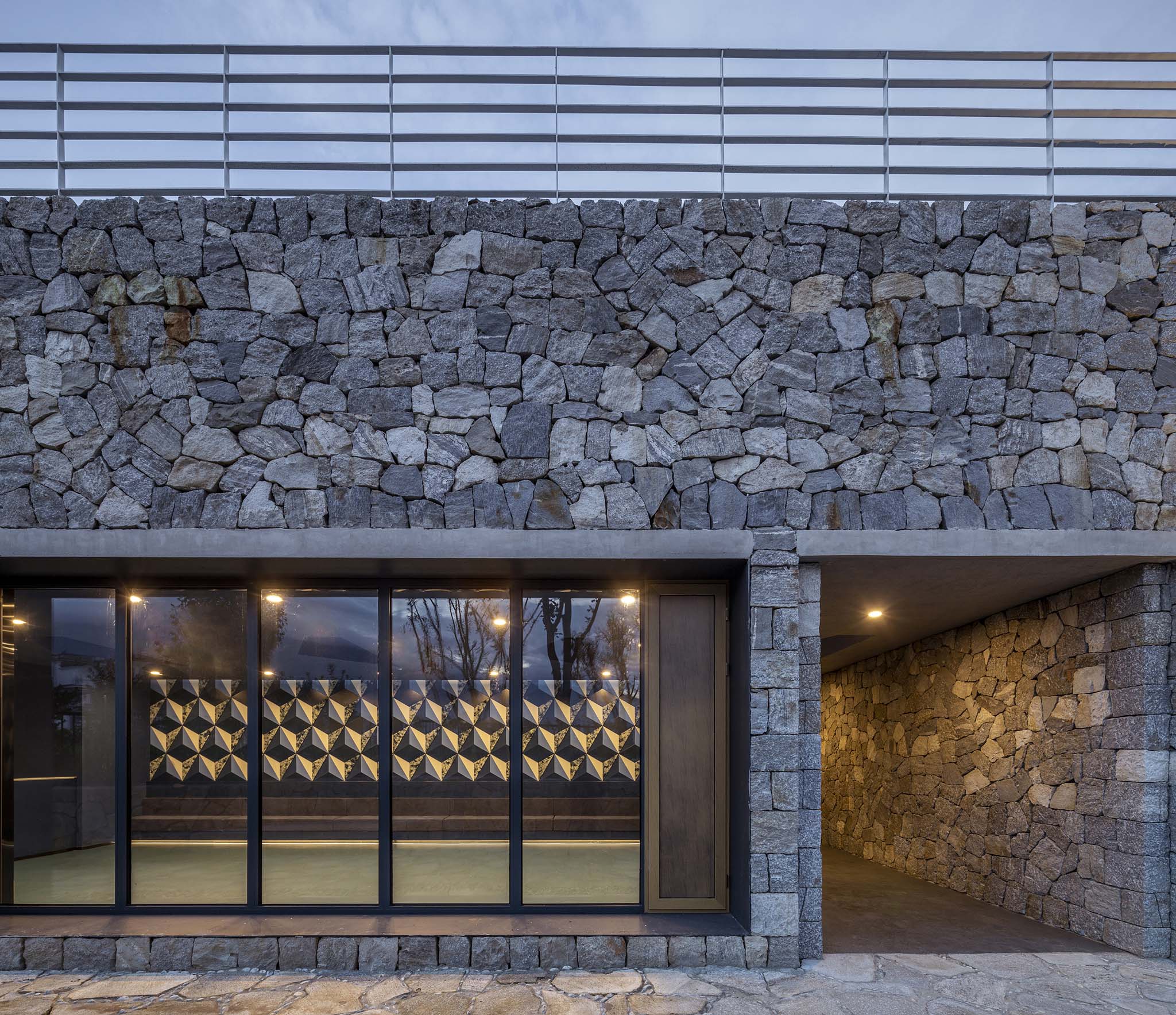
The design of the sail also brings many challenges to the implementation of landing. In the design process, the team needs to consider the contradiction between resisting huge wind loads and the lightness of the structure. By weighing and considering the technical problems such as wind resistance, project cost, durability, and construction convenience, the design team abandoned the scheme of wood structure as the main structure of the sail and finally decided to adopt the treatment method of steel structure covered with wood grain transfer aluminum plate. In addition, the viewing platform and ramp are supported by a single column, which also weakens the bulkiness of the structure to the greatest extent.

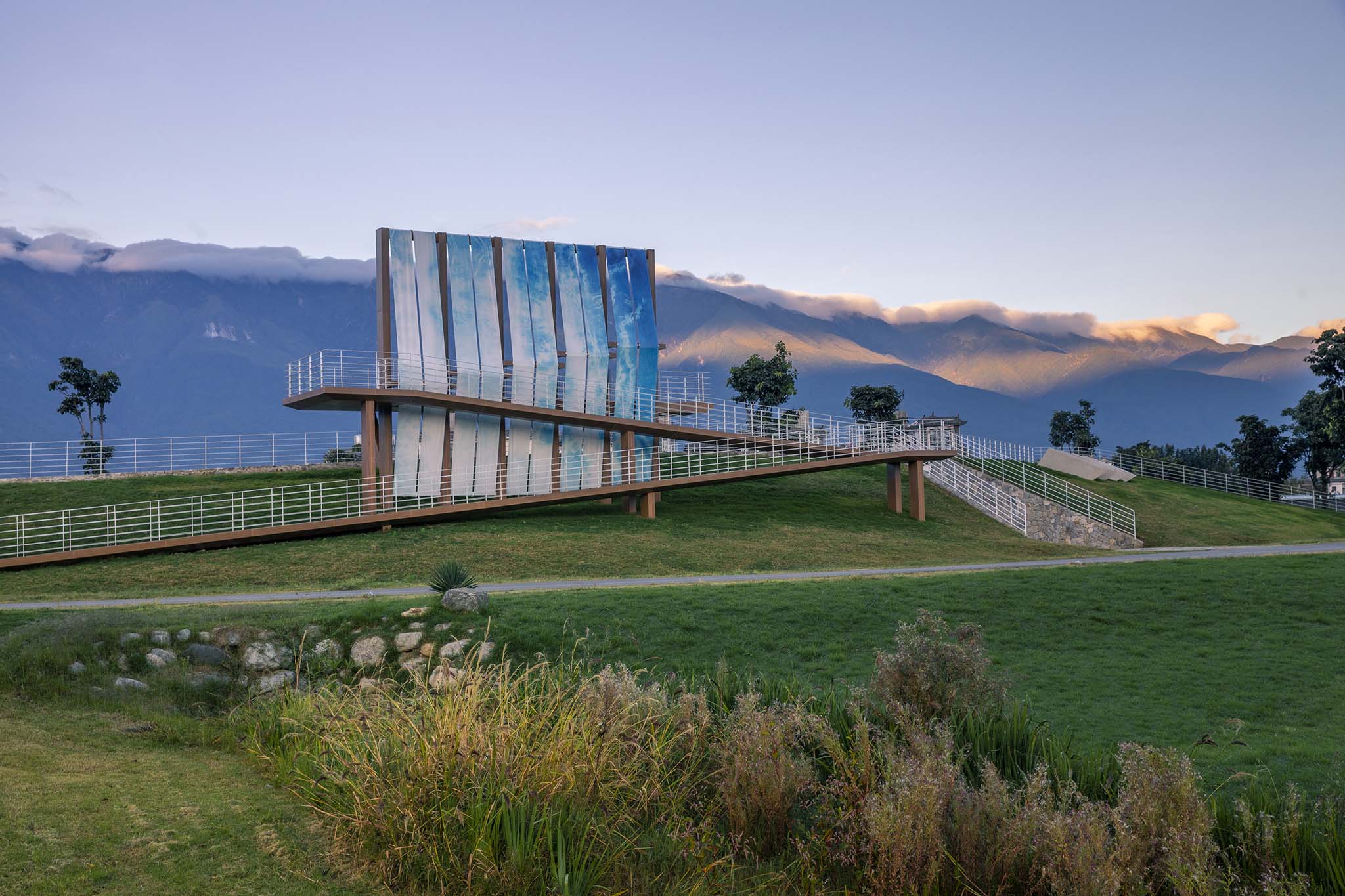
The sail is not simply suspended vertically but gives lateral support at different elevations to increase the wind resistance and form a sense of momentum and rhythm. The four sides of the sail are provided with steel cables, which are fixed on the steel structure to ensure that the canvas is straight and easy to replace in the future.
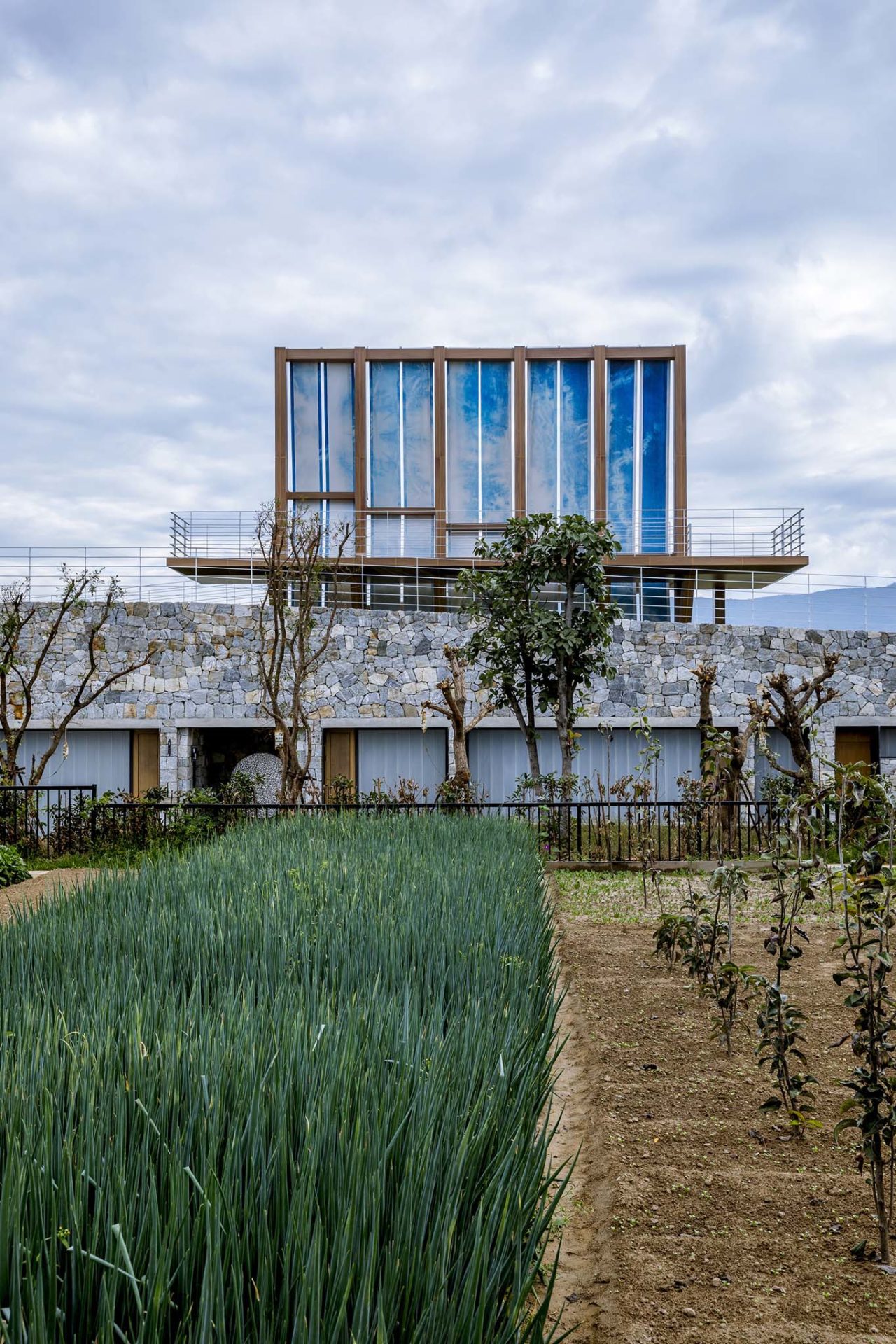

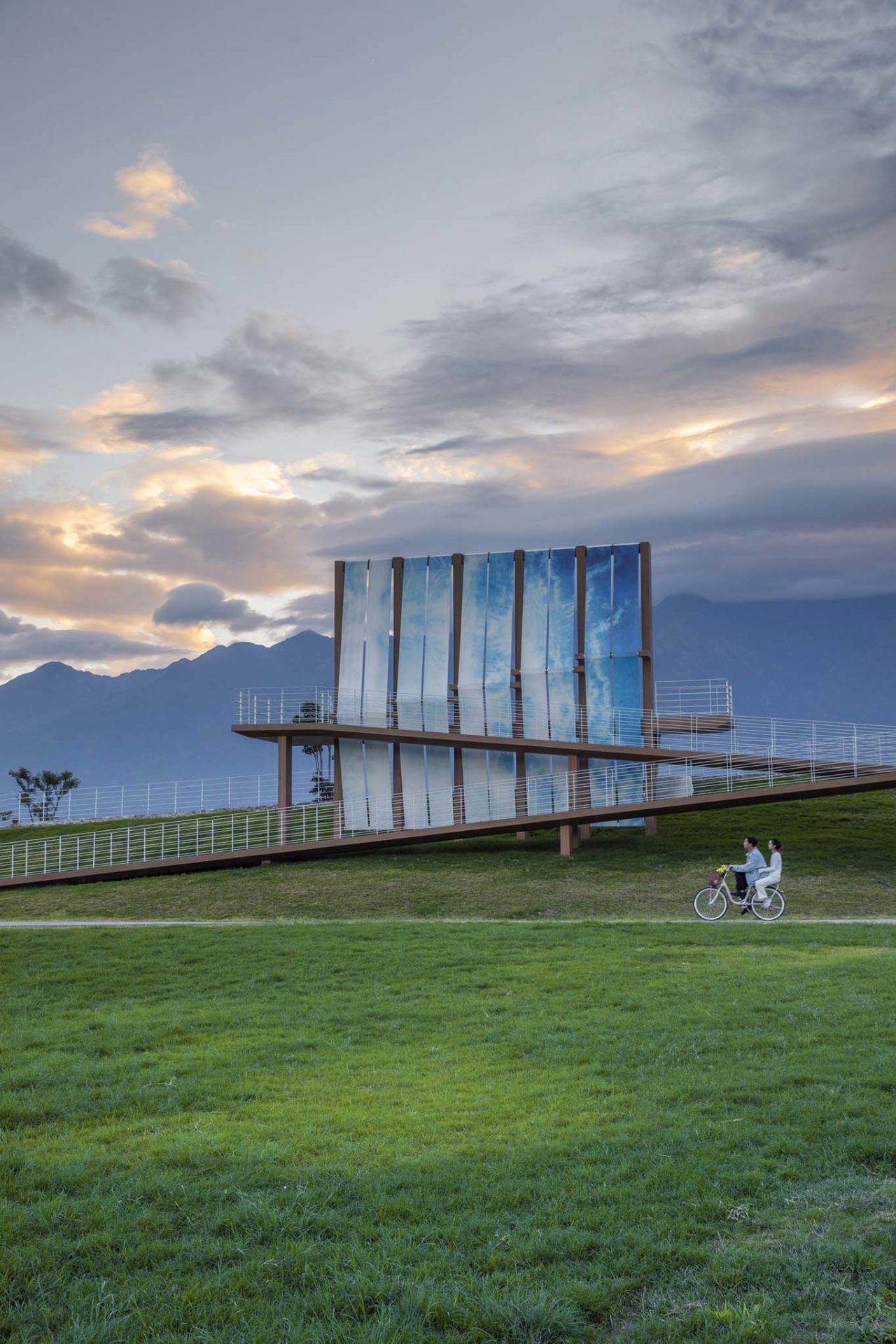

Interior: strong colors and dramatic light
The interior design concept of the building continues the concept of “Bai tie-dying”. The design team extracts the representative blue in traditional tie-dyeing technology and puts it into the space to bring users a different feeling of space through strong colors. Leisure Bar provides simple catering services for cycling and sightseeing tourists. The wall adopts the patchwork pattern of traditional tie-dyed cloth and blue and white, but it is abstracted with modernity. The bright yellow on the vertical plate of the water table has a comparative and specific effect.
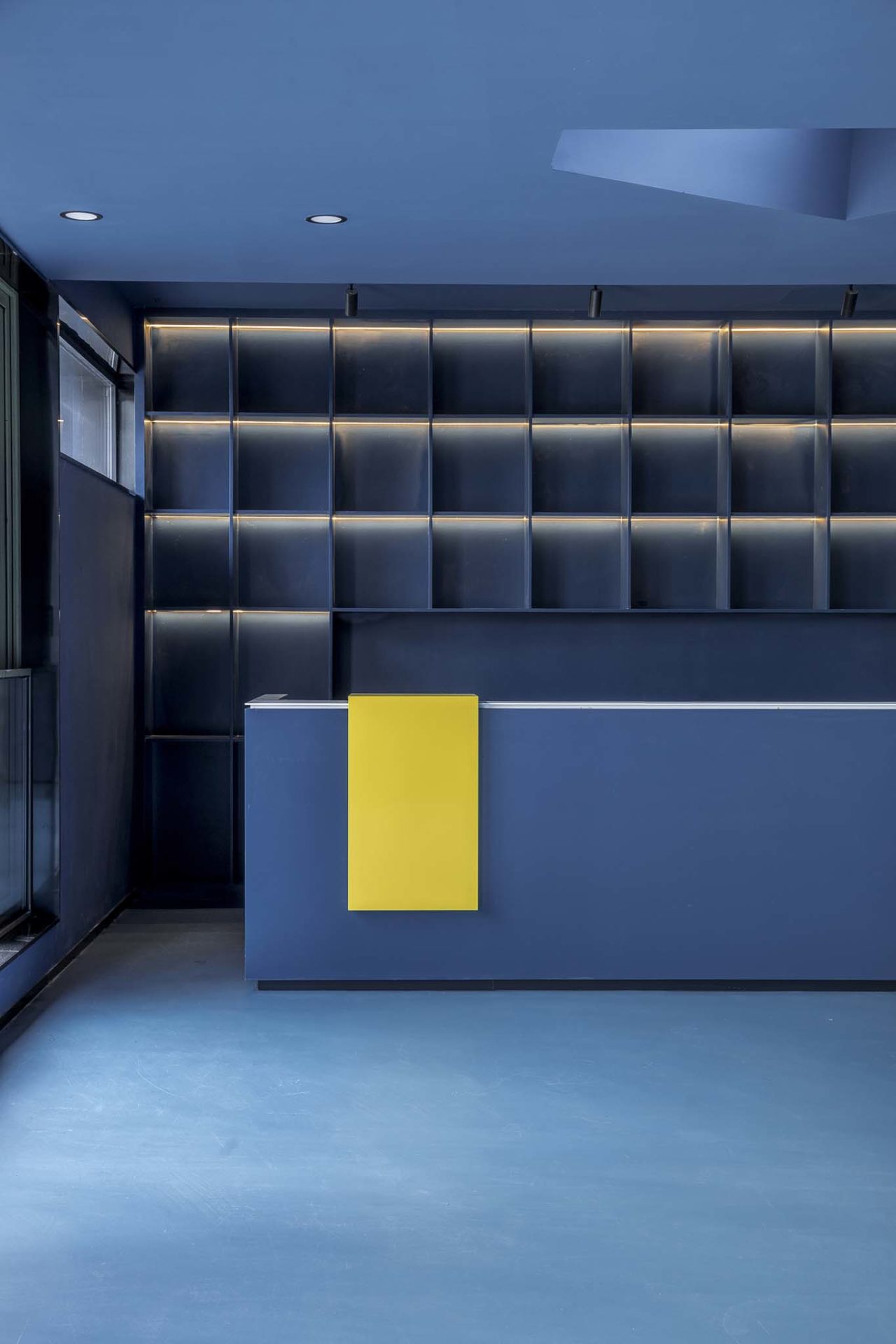
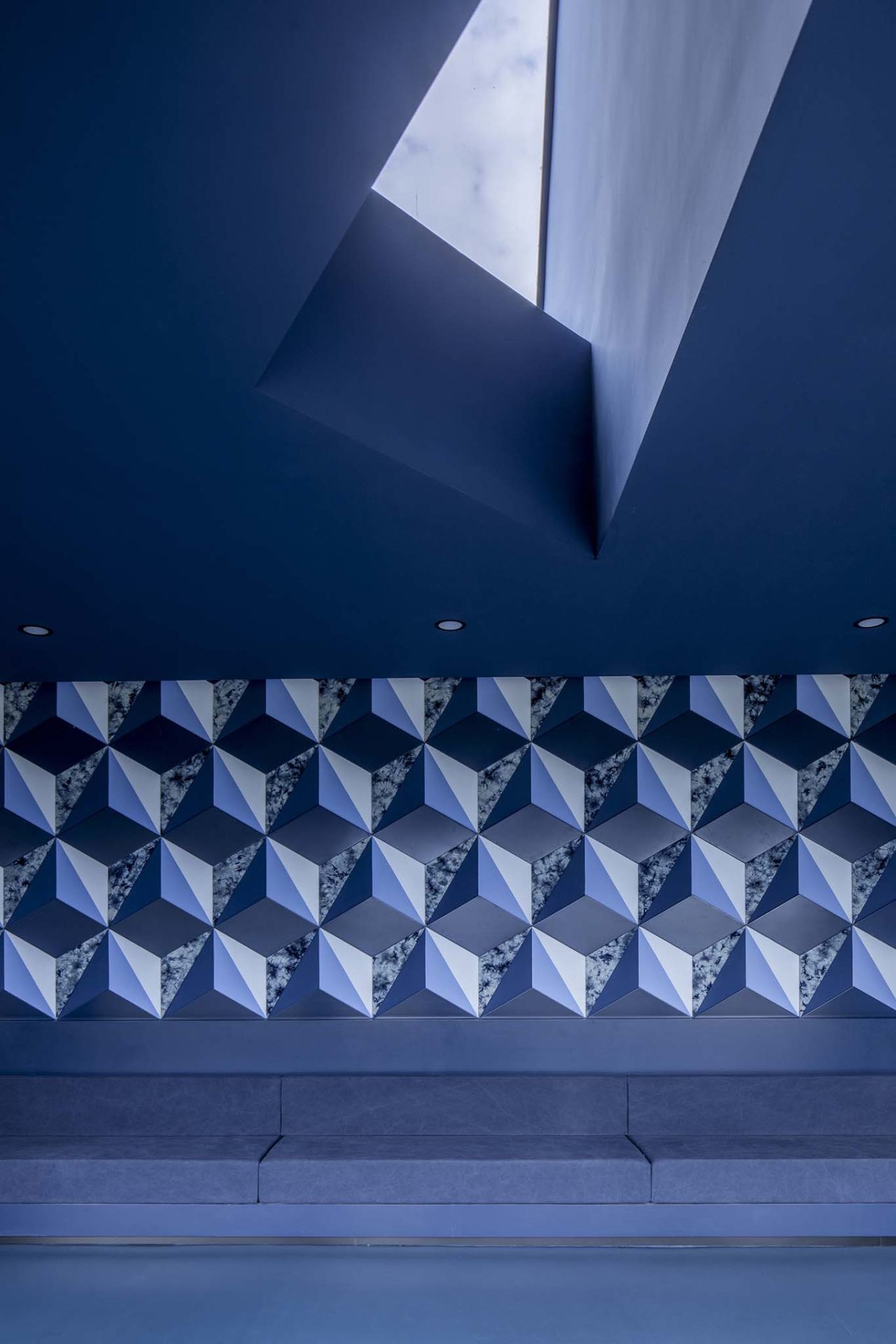


The public restroom has complete functions and is equipped with men’s and women’s rooms, mother and child service rooms, and accessible toilets. The space uses blue tiles as the main material, and the color is unified with the leisure bar. Considering the lighting and privacy requirements of the toilet, the design team adopted frosted U-glass as the facade lighting. From the outside, the hazy semi-transparent U-shaped glass forms an interesting contrast with the rough shape of the rubble wall. In addition, the designer believes that even public toilets can be artistic. Therefore, a circular water ripple device and a circular skylight are specially designed at the entrance of the public toilet. When the light enters, the three circles in the space echo each other, increasing the interest of the space.
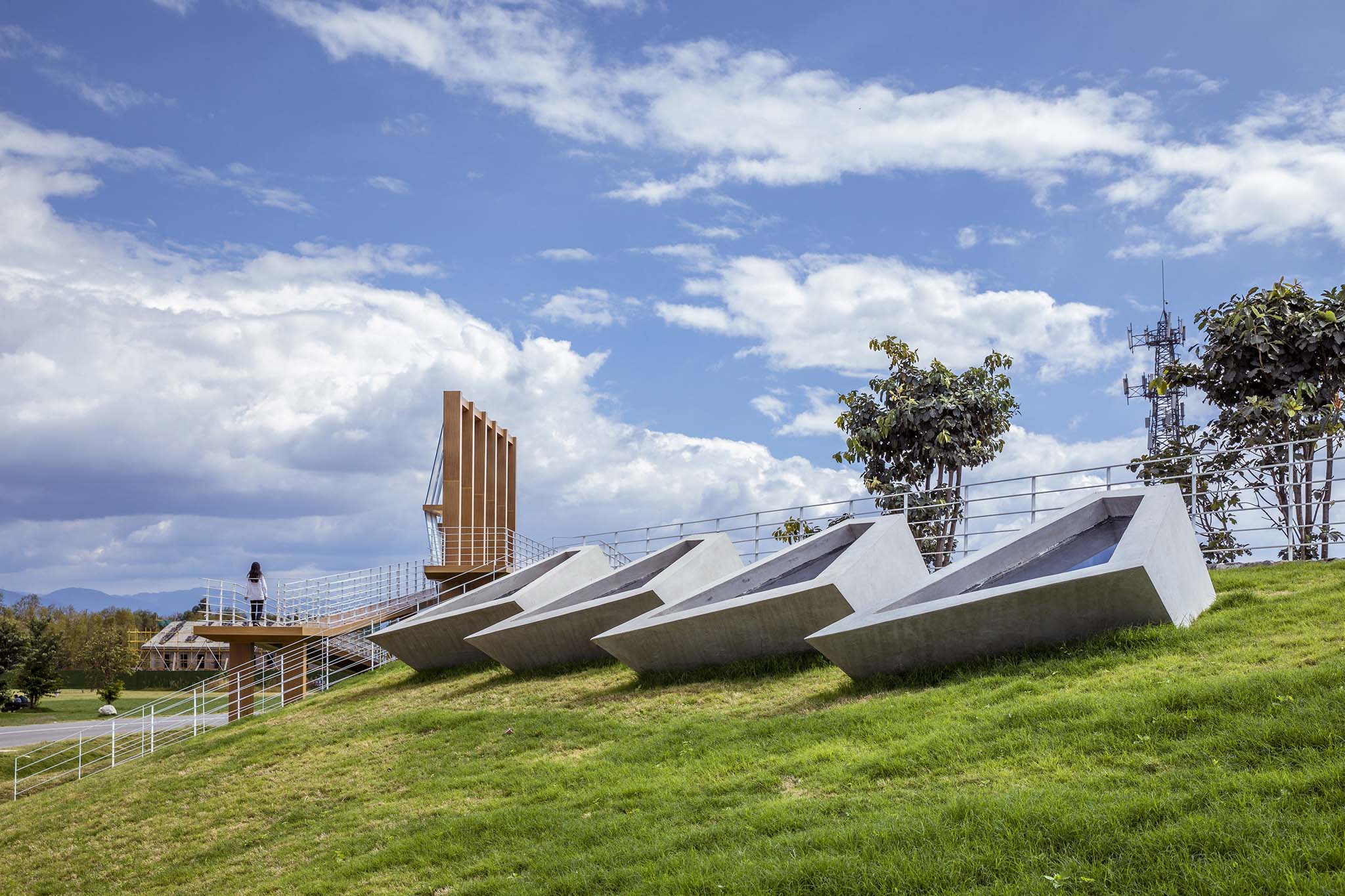
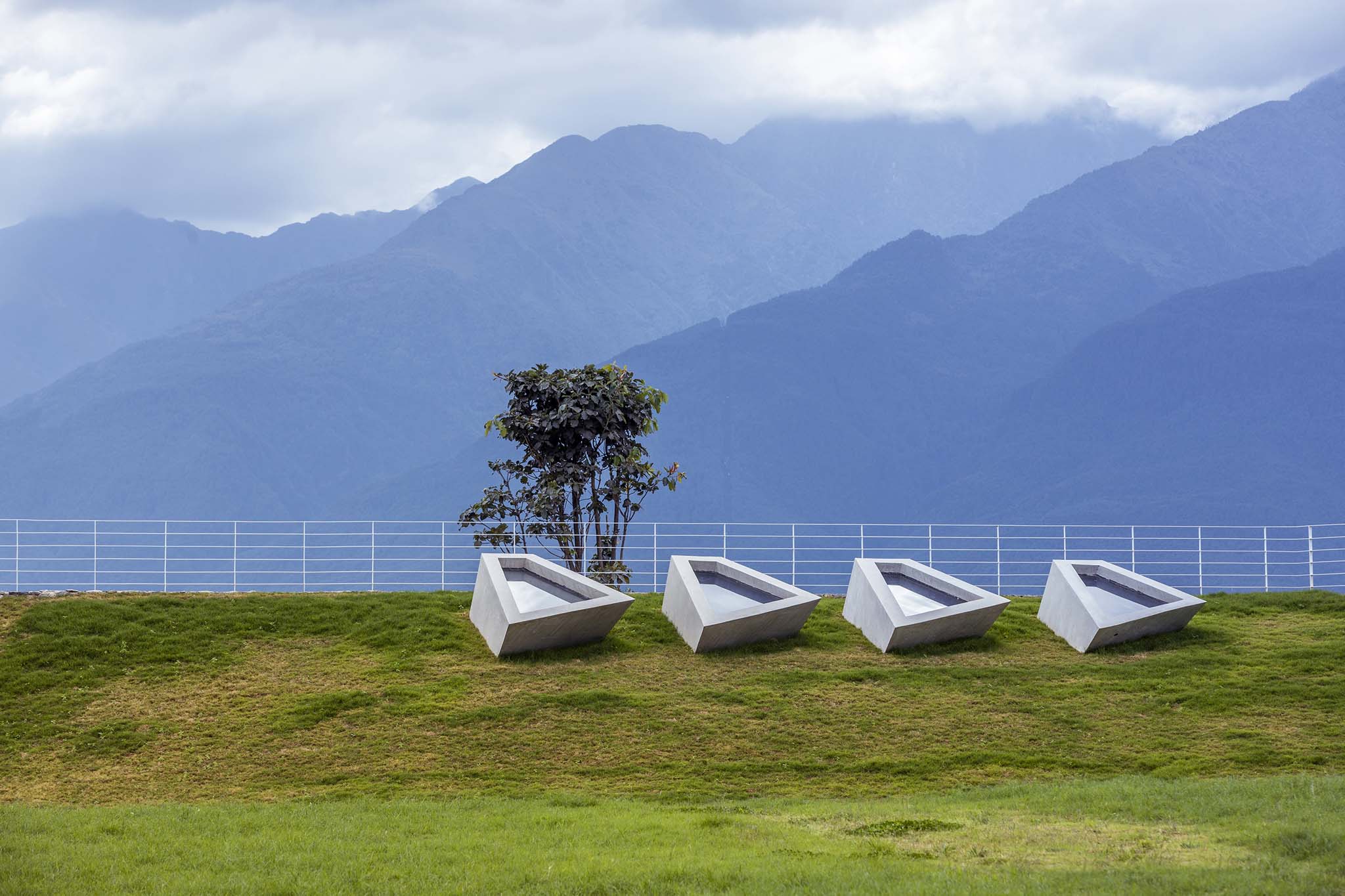
Conclusion: create a relaxed and vivid service station for Haixi
The Sails Service Station (No. 5 service station) can be not only a building but also a work of art, a device related to the water, sky, wind, and people of Erhai Lake.
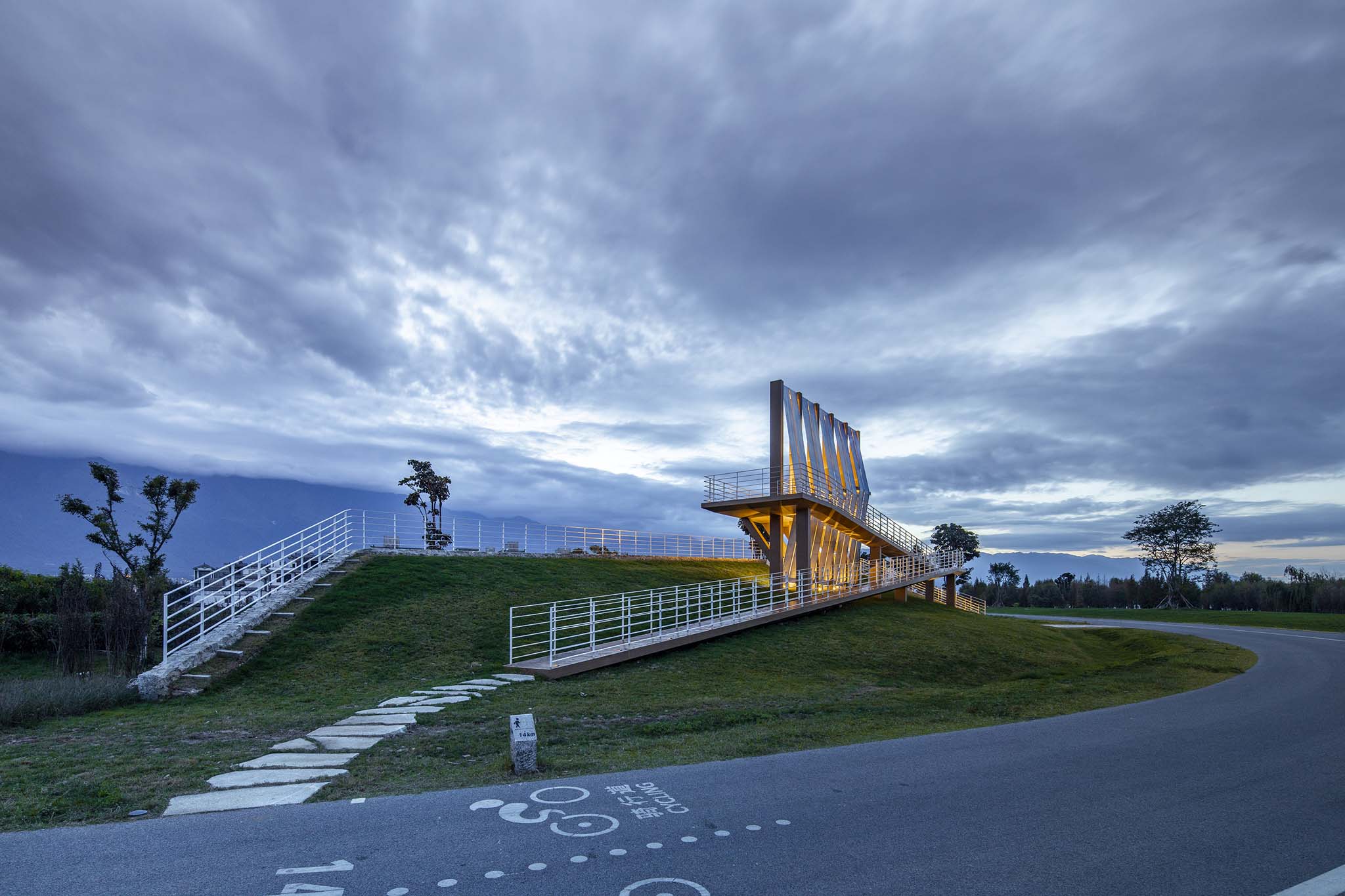
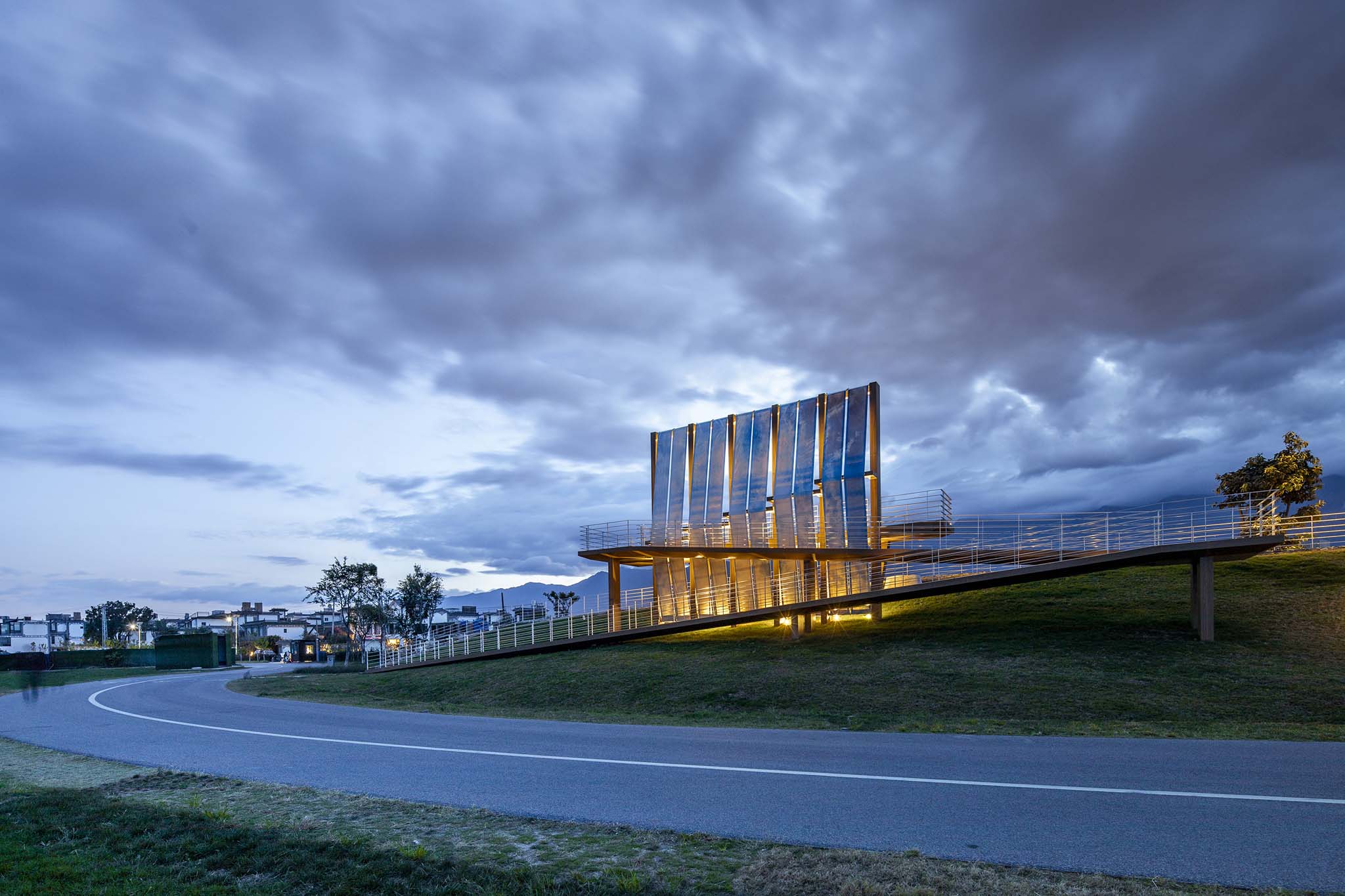
For this service station, the designers of 3andwich Design use an alternative way to build it. It is transparent, lightweight, even a little cool, and can interact with people, environment, and events. This design does not want to give users too heavy feelings. On the contrary, it responds to the natural conditions and historical context of the site openly and becomes the connection point between the environment and people.

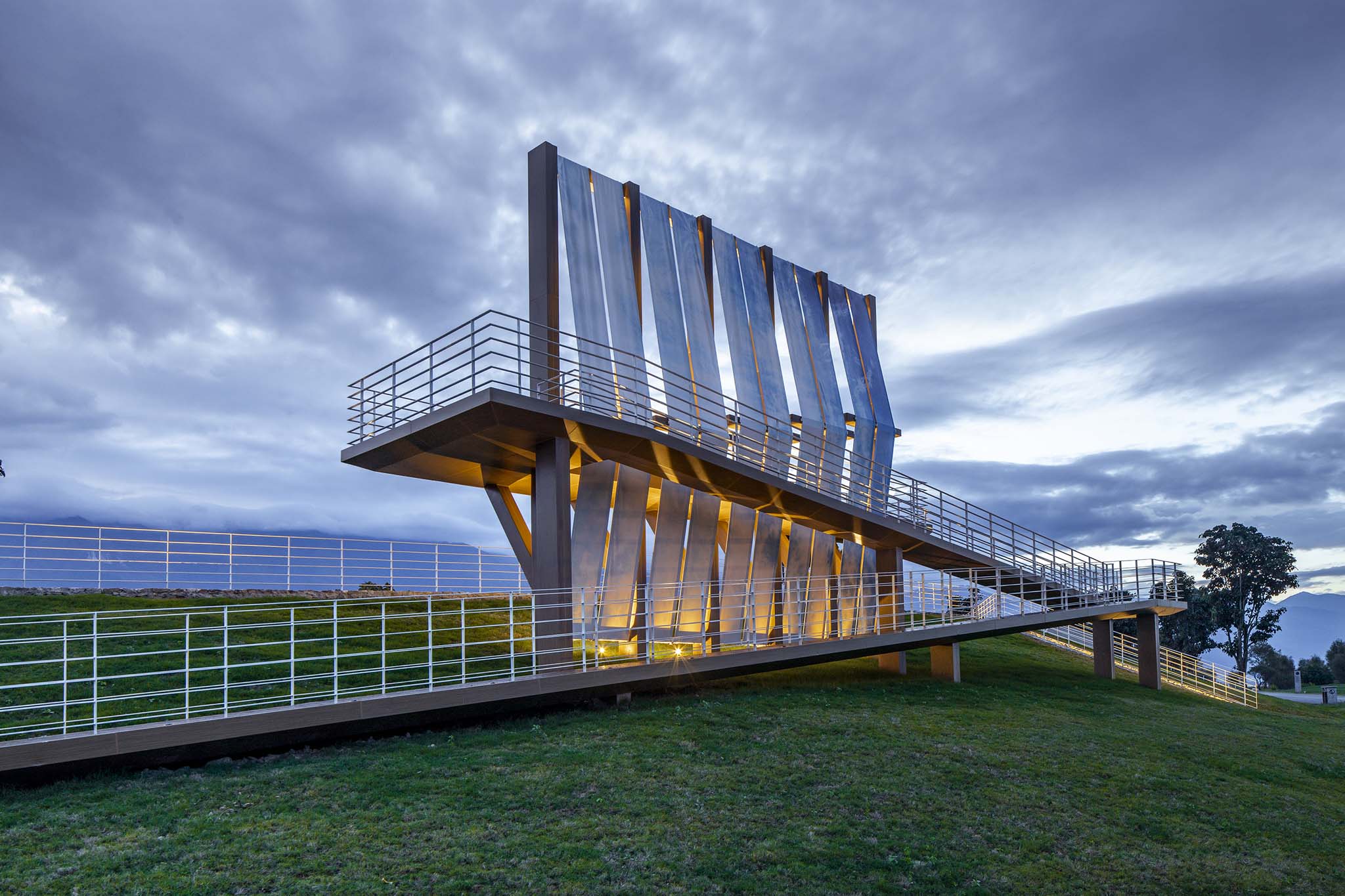
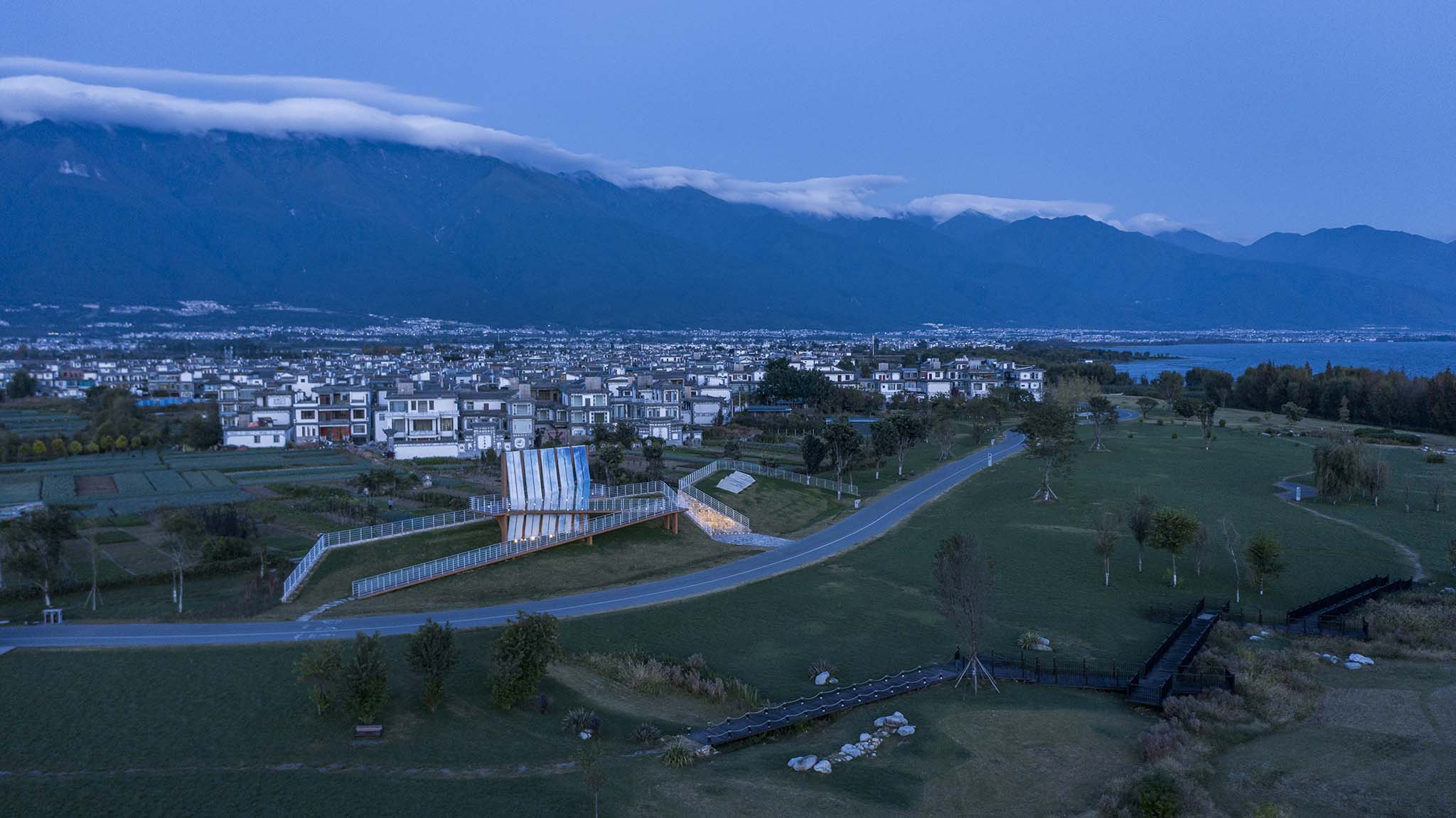
The project description is provided by the architects.
About the Architects

3andwich Design is an architectural design firm founded in 2012 and based on authoritative academic institutions such as China Central Academy of Fine Arts, Tsinghua University, and China Architectural Society. It engages in interdisciplinary research and practice including urban renewal, architectural and interior design, exhibition and curatorial, lighting, and art. Its design concept emphasizes humanism, dialogue between the history and the contemporary, and interaction between the natural environment and regional culture. The studio specializes in cross-border thinking and research-based design. For many years, the studio has also been dedicated to rural architectural design, especially in undeveloped areas of China, and has employed the methodology of micro-intervention, which is widely used in the typological study that has allowed the revival of rural villages and communities.
